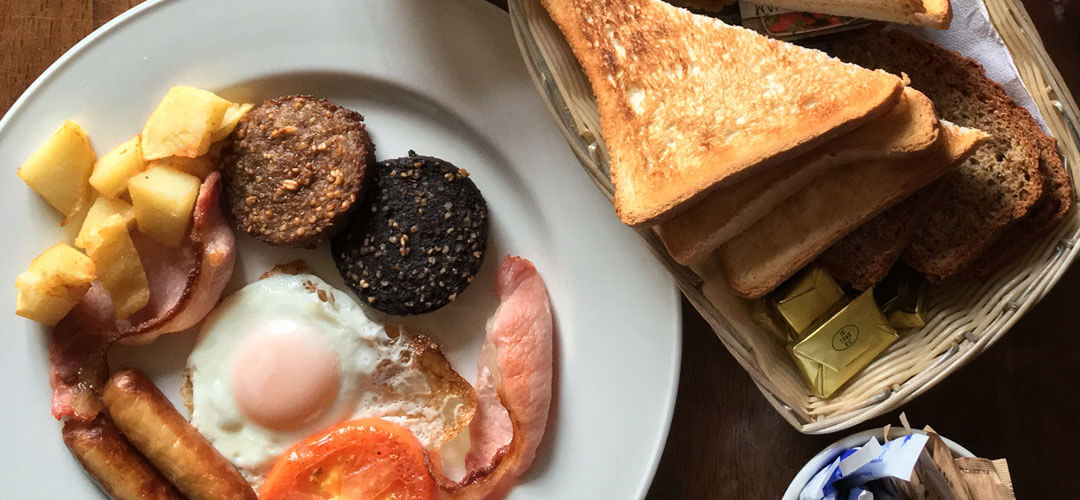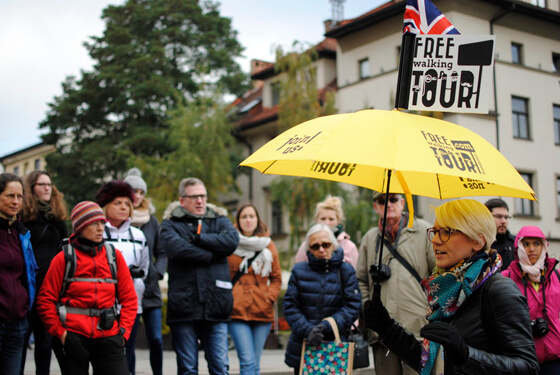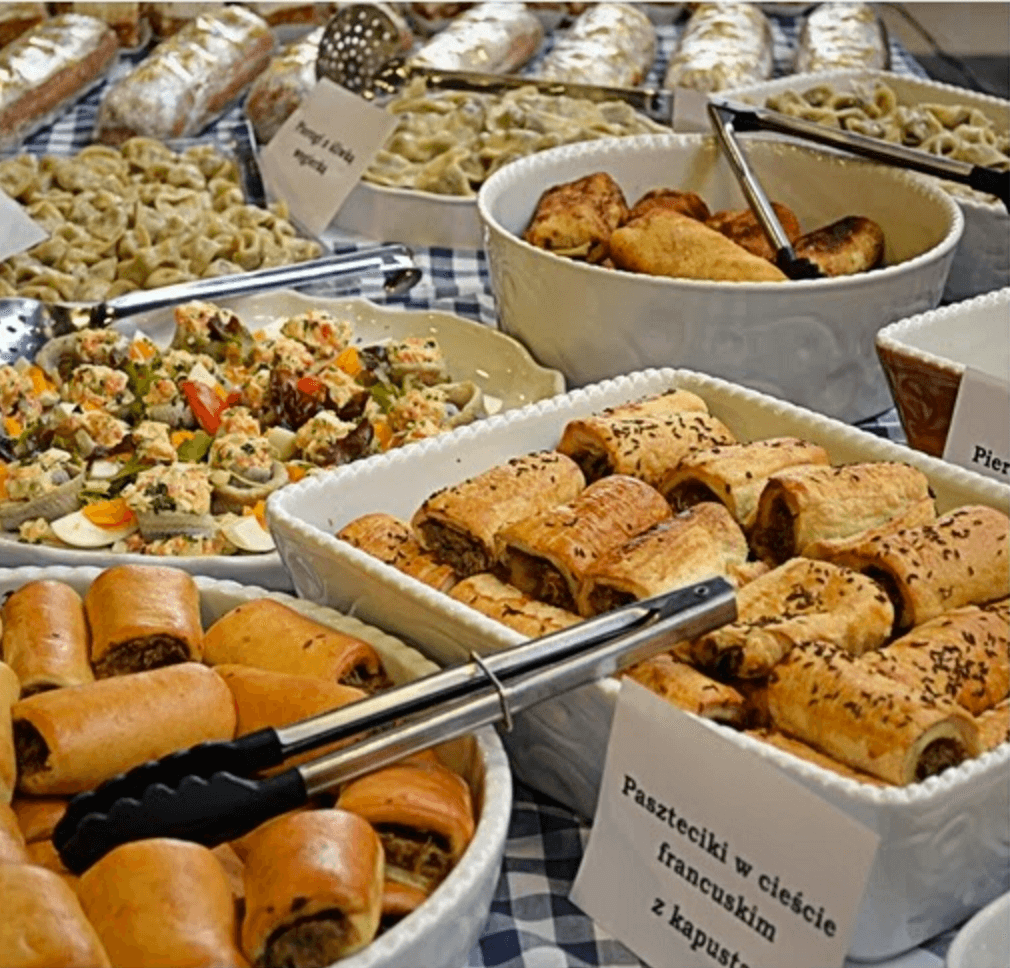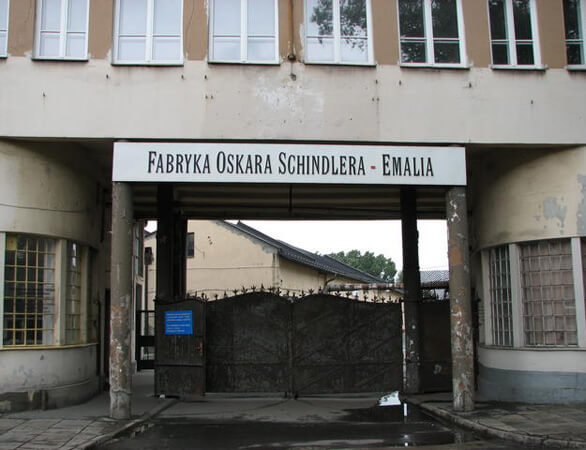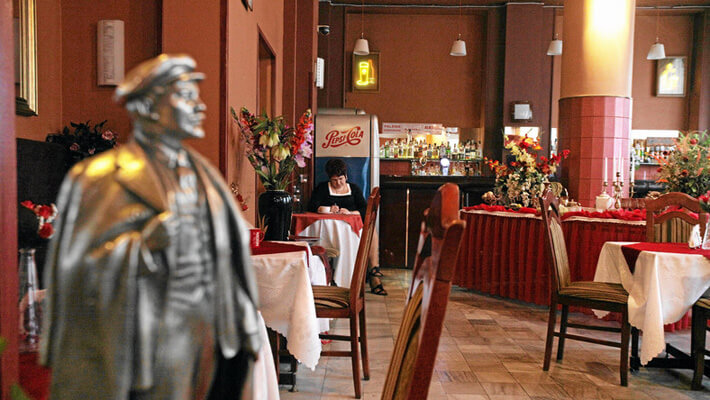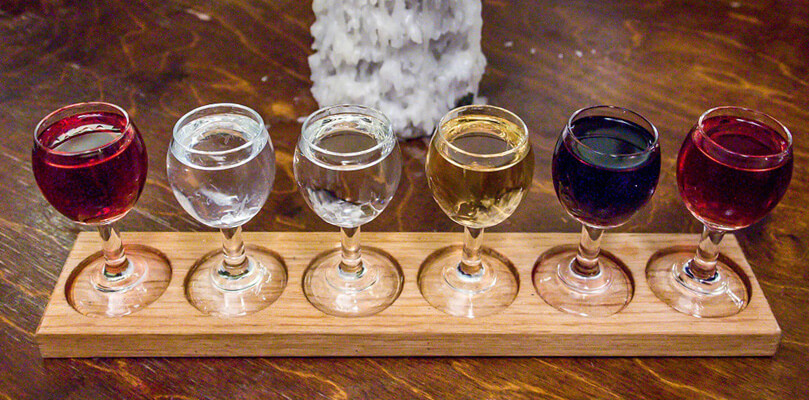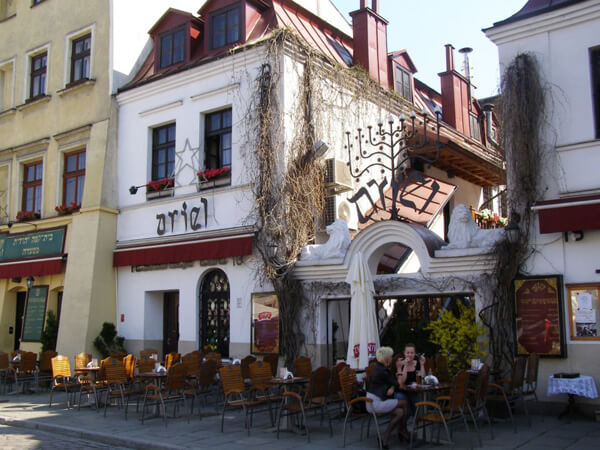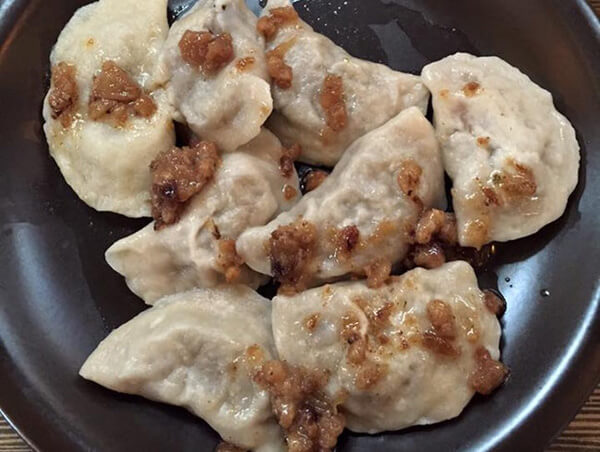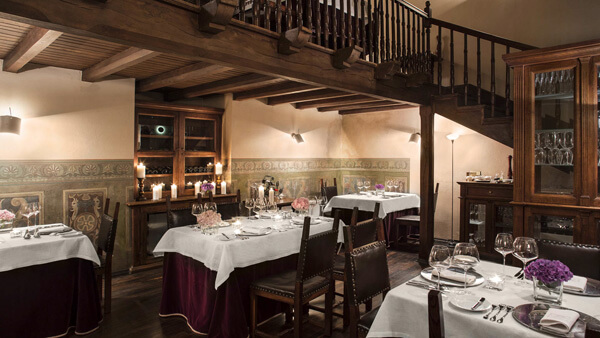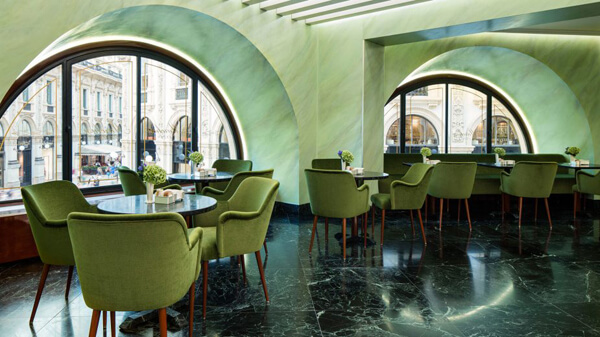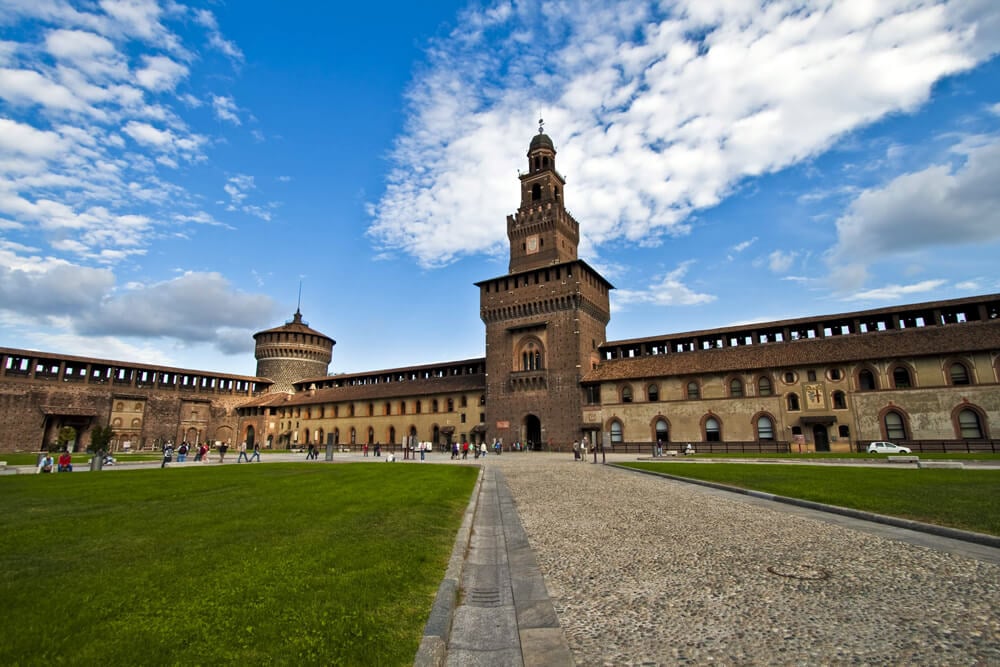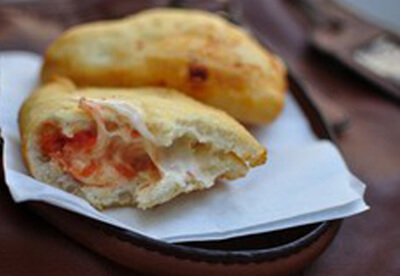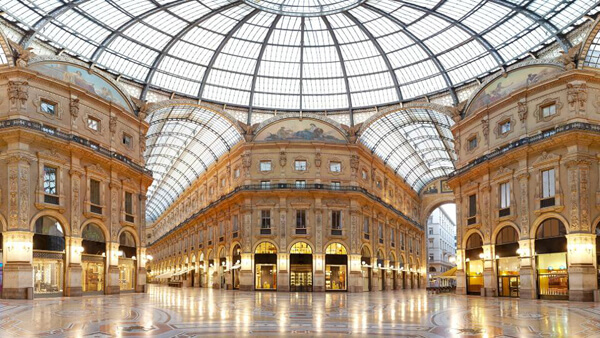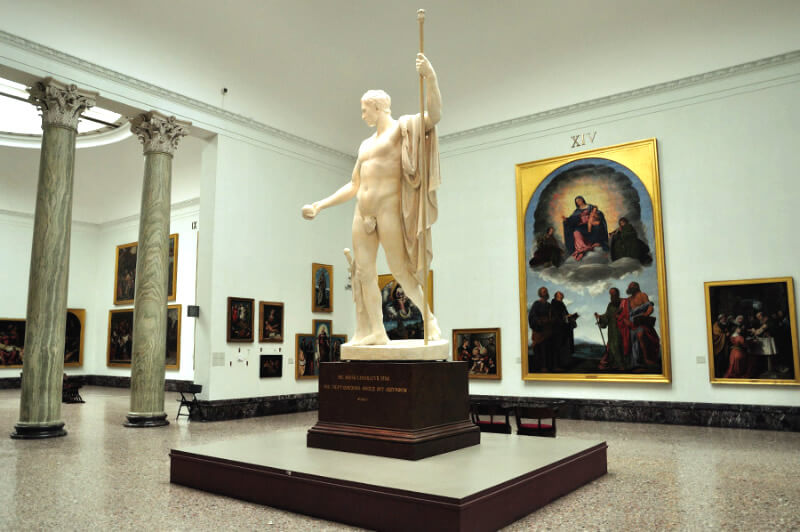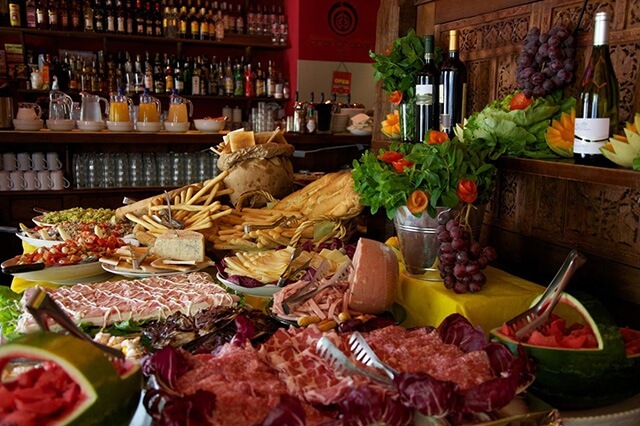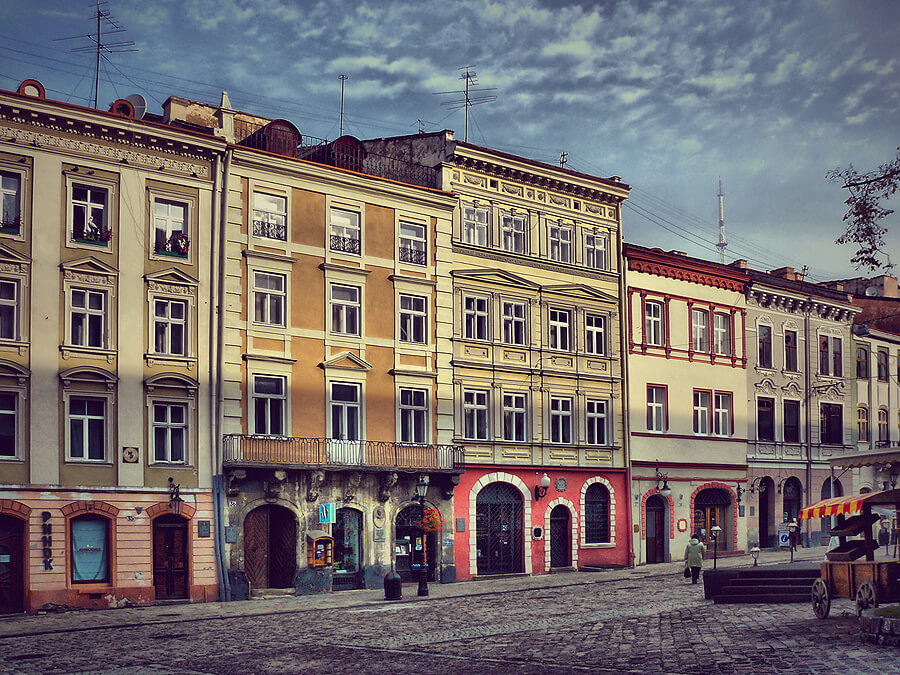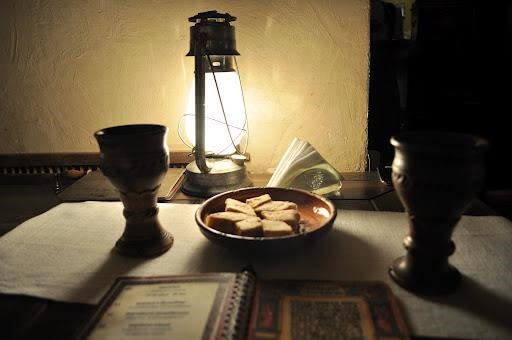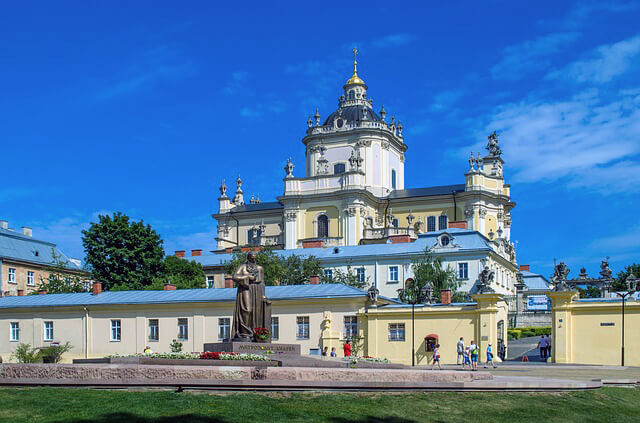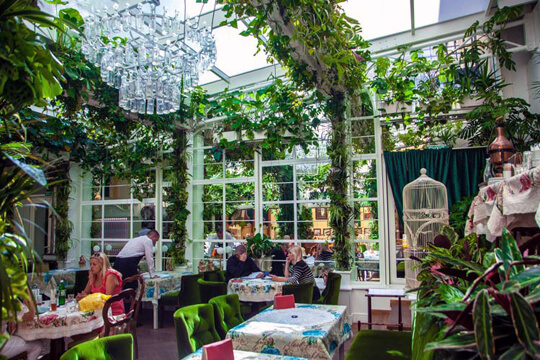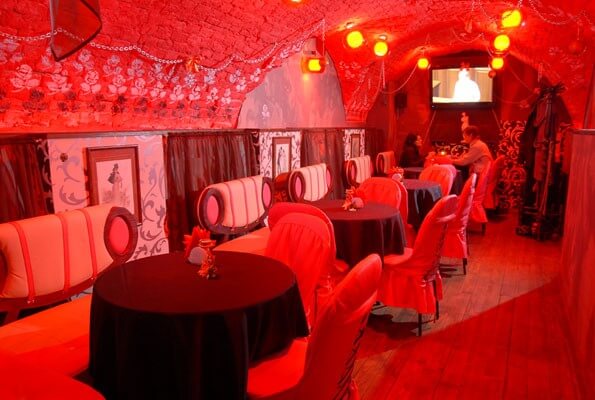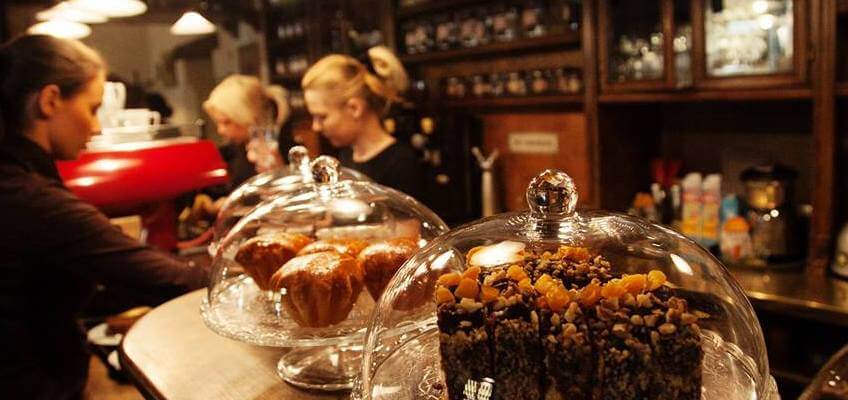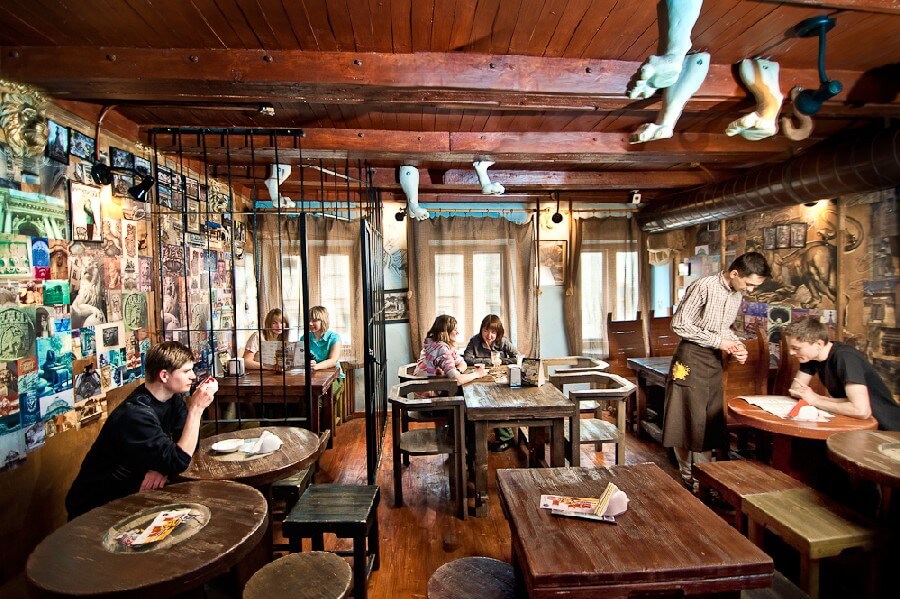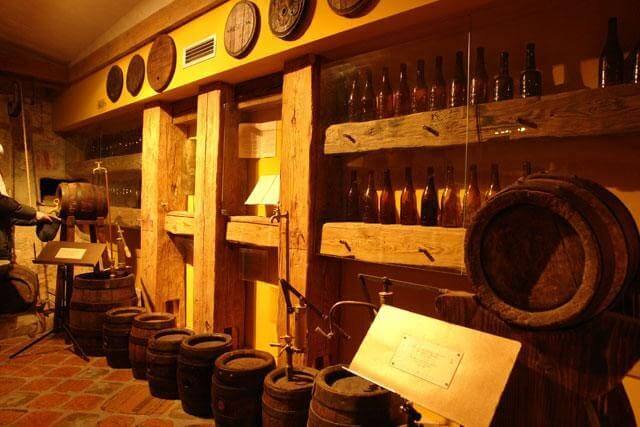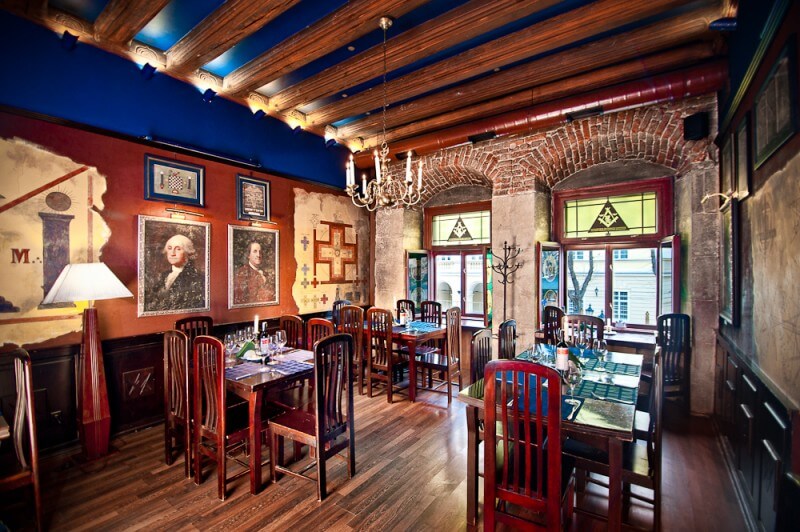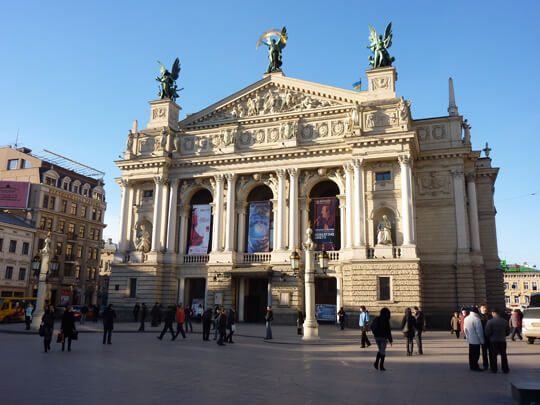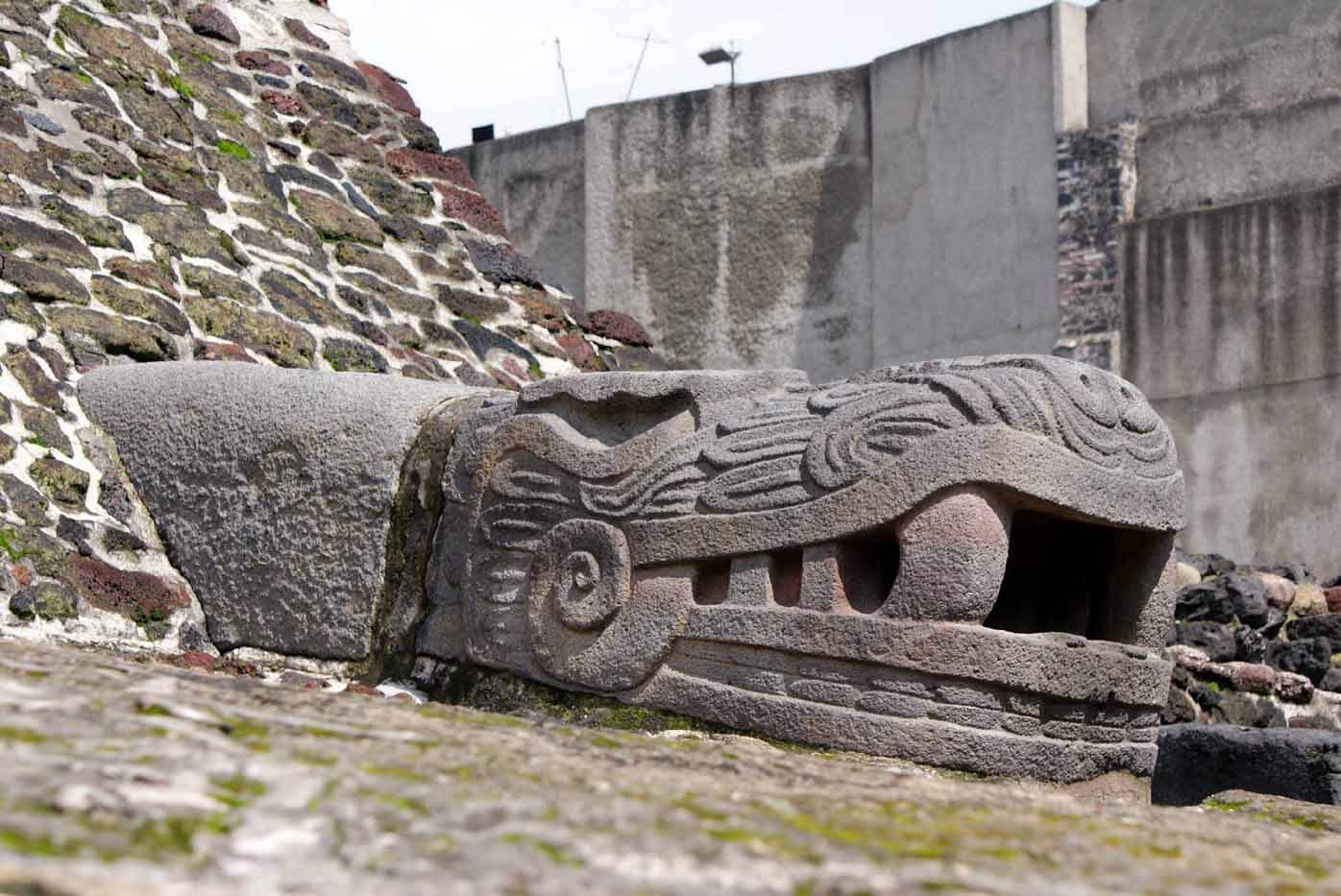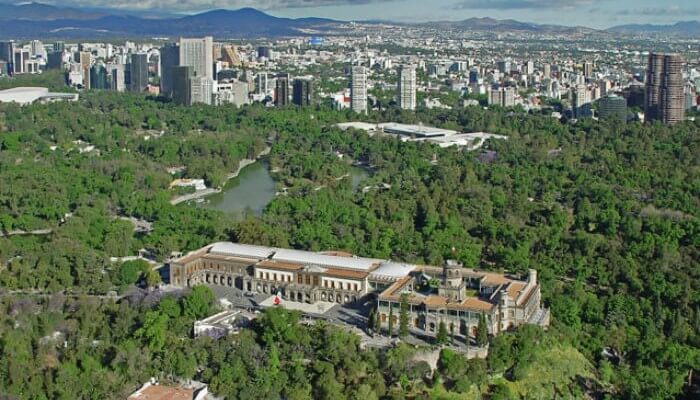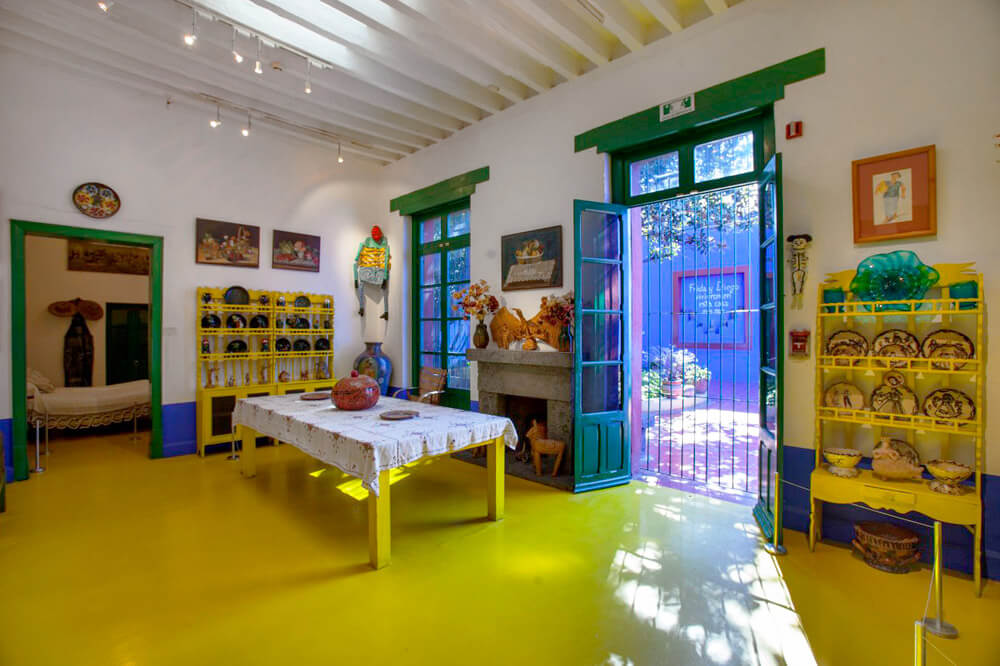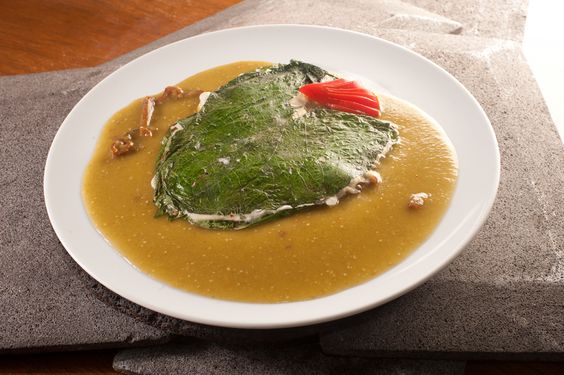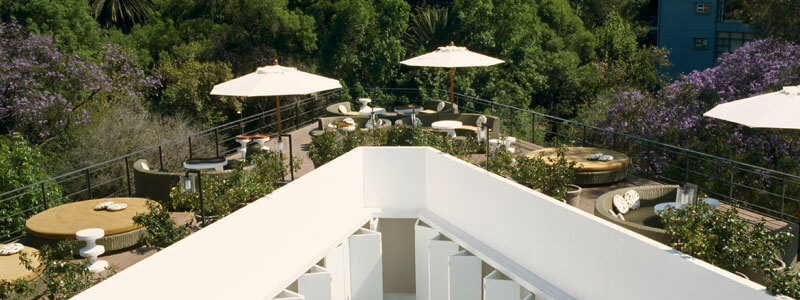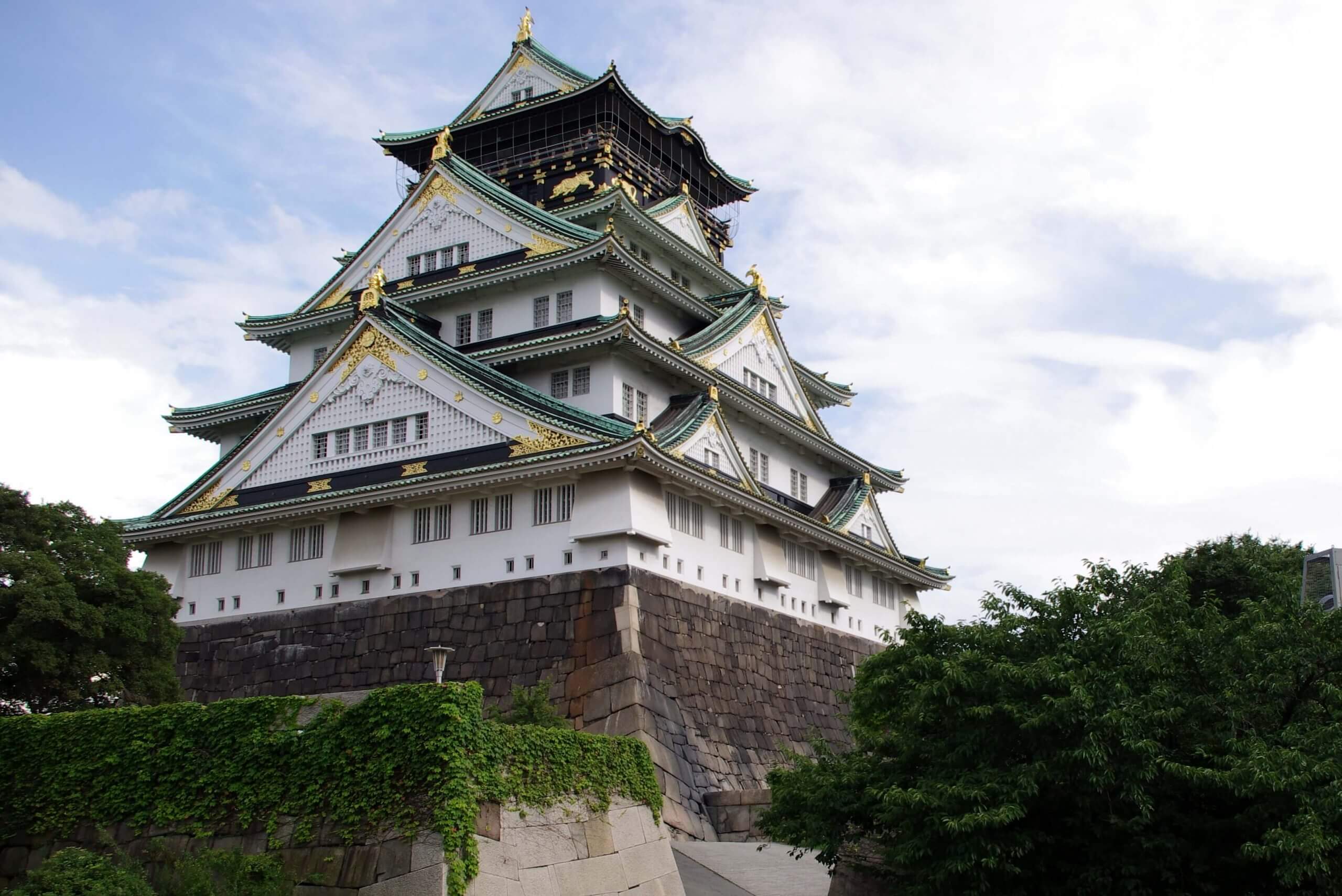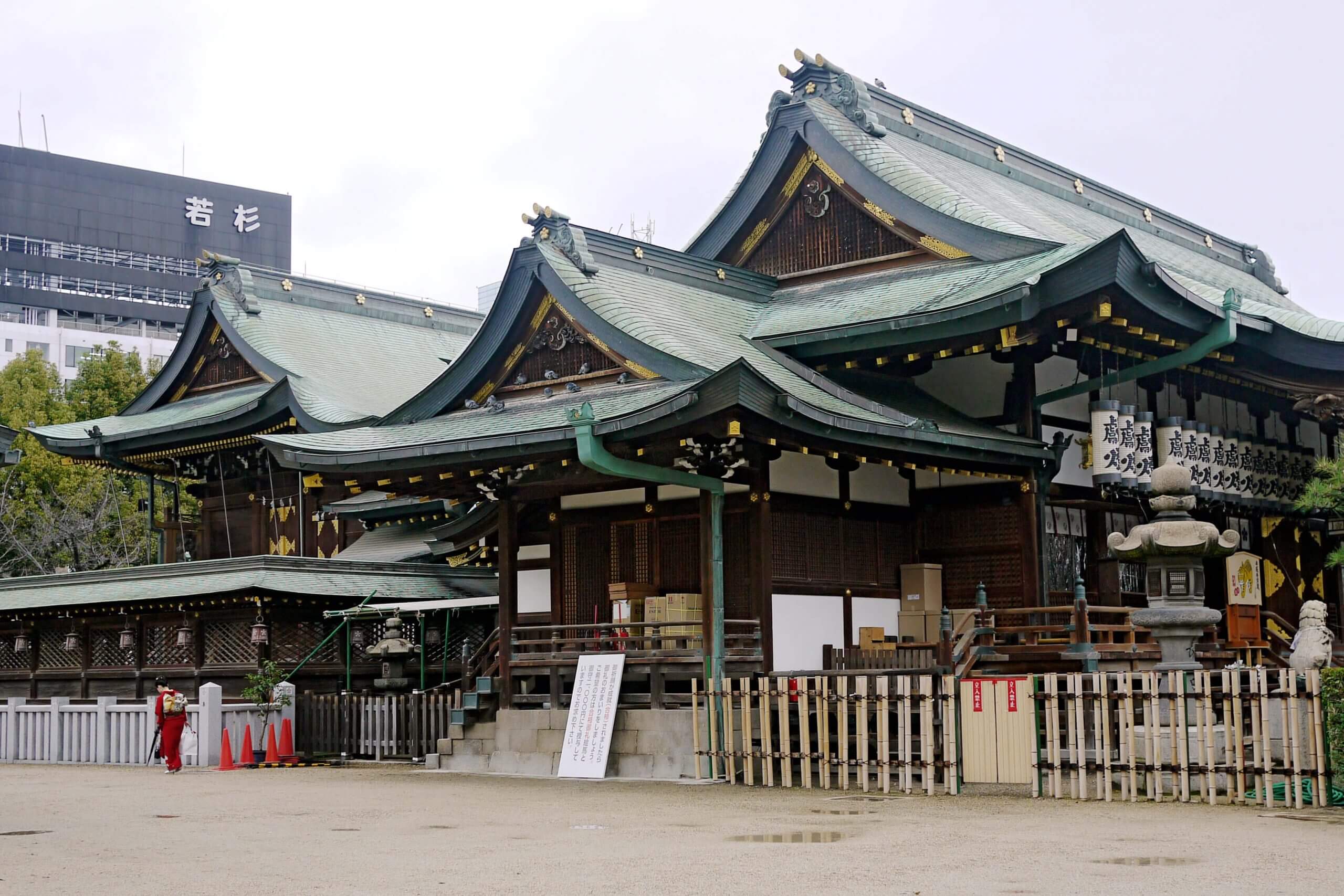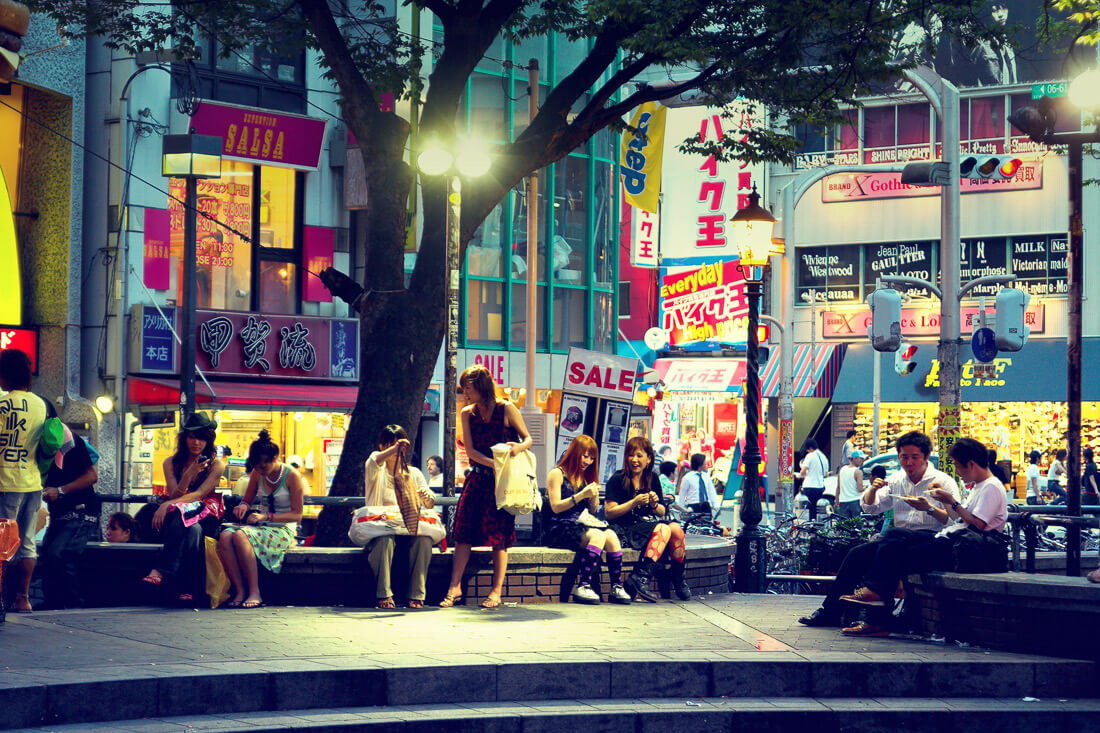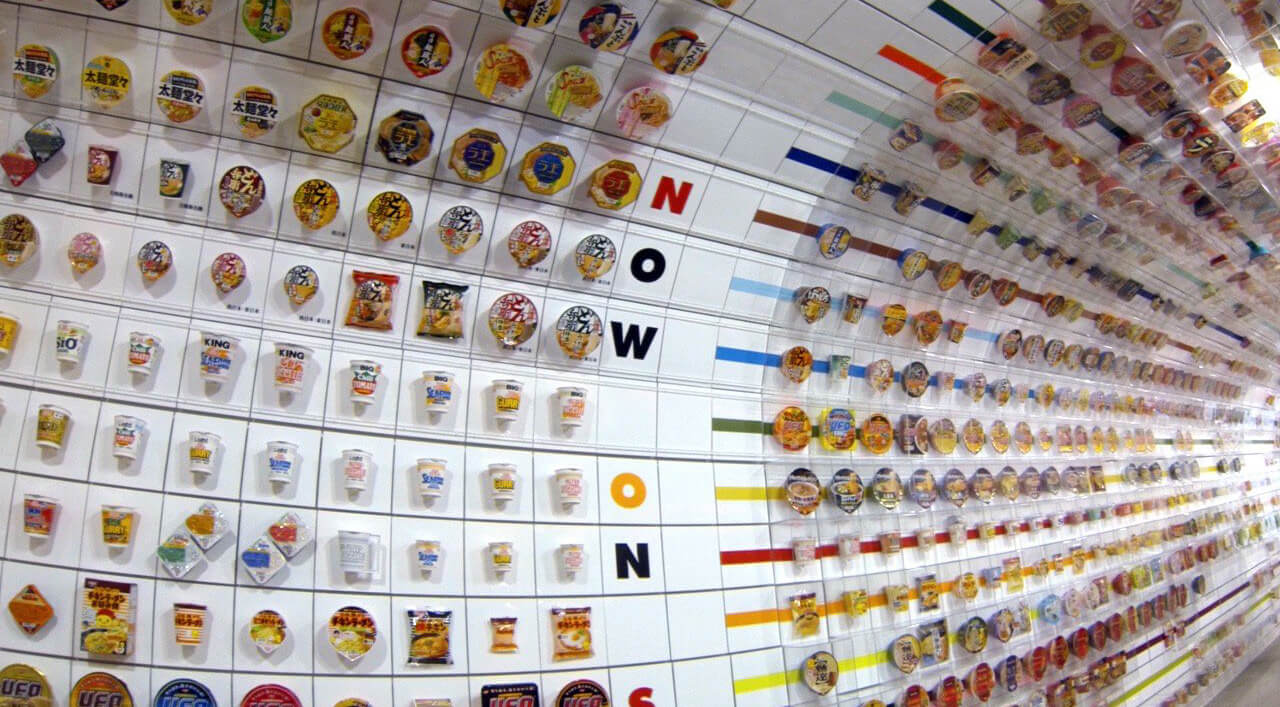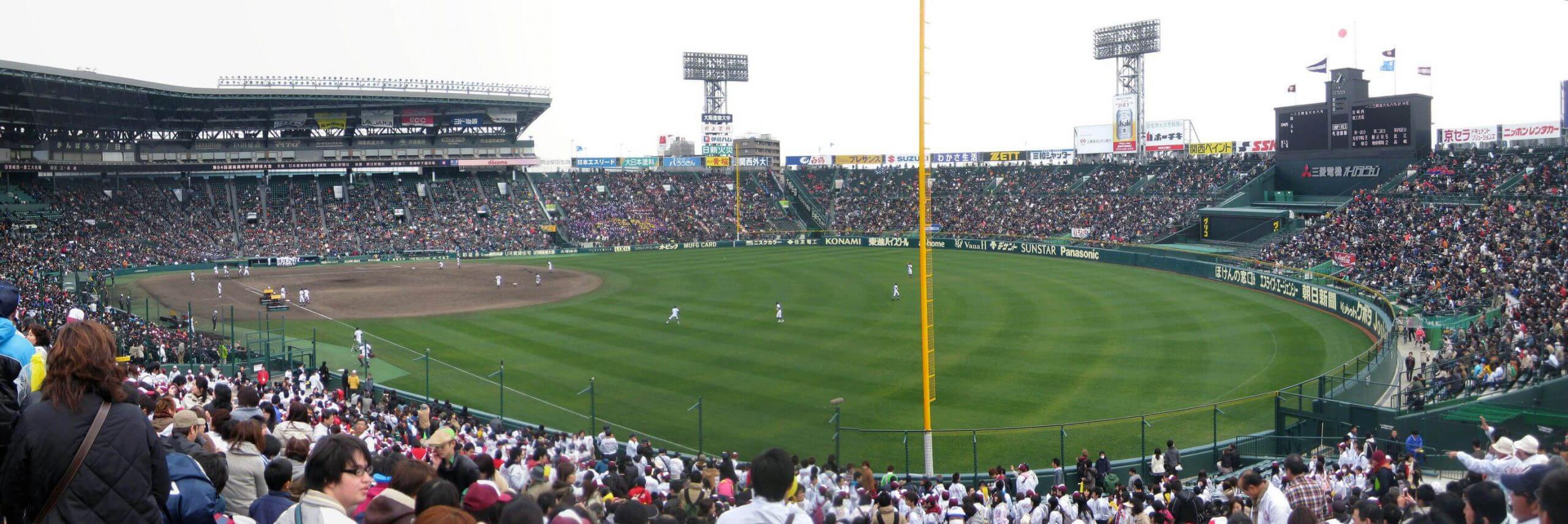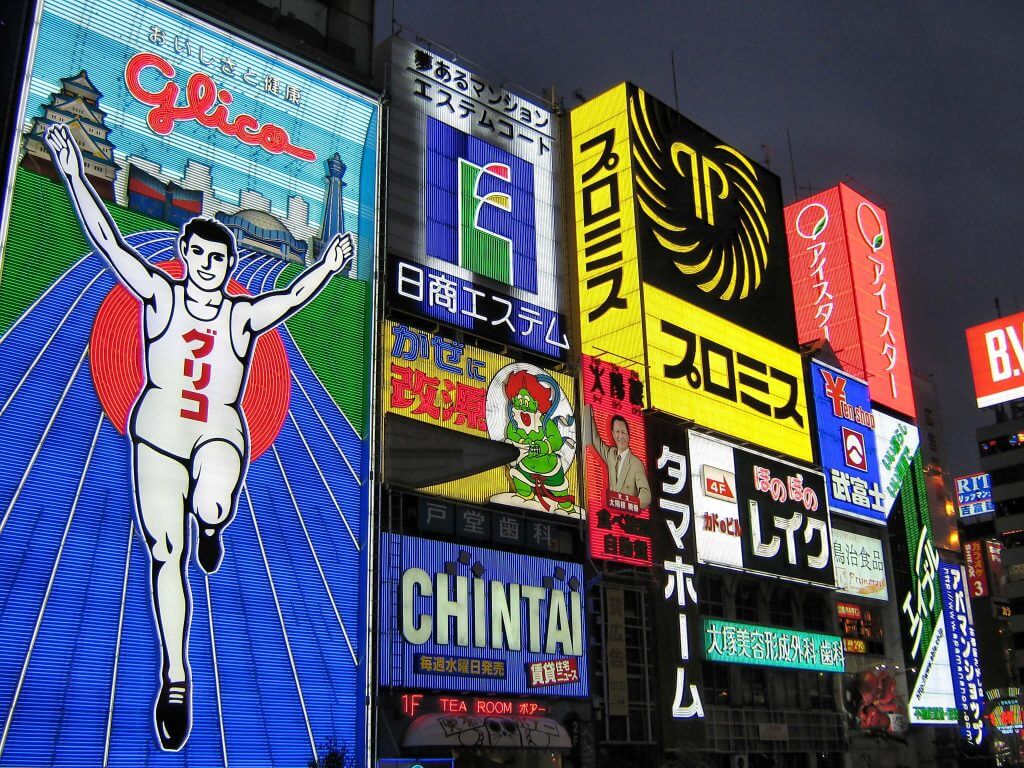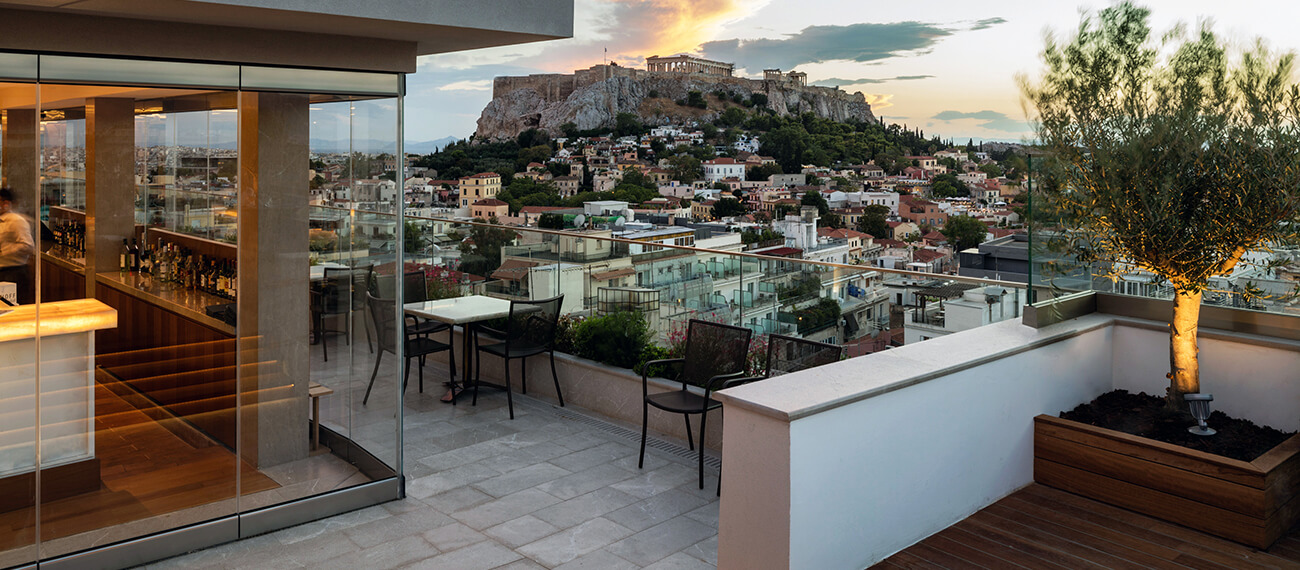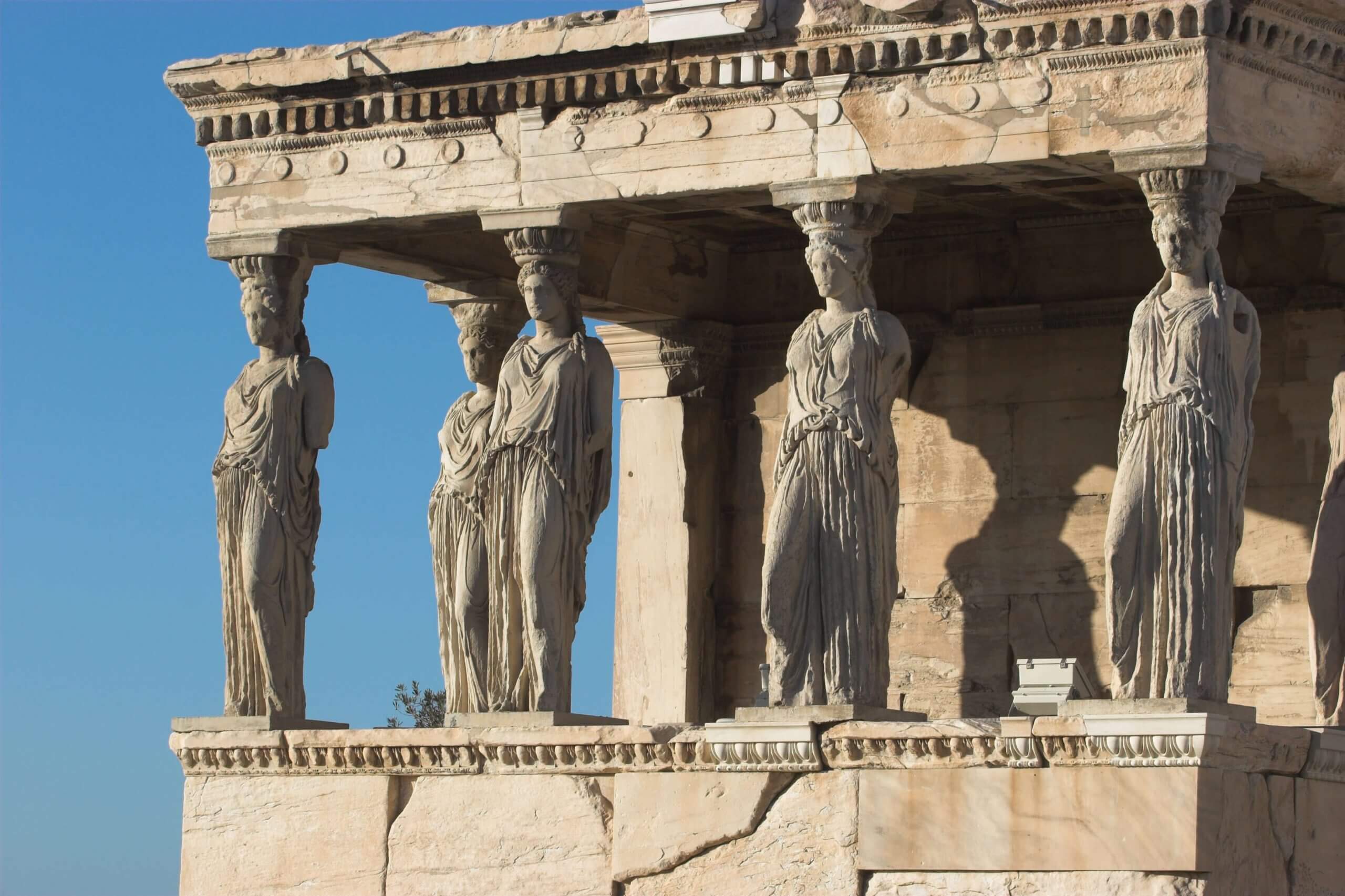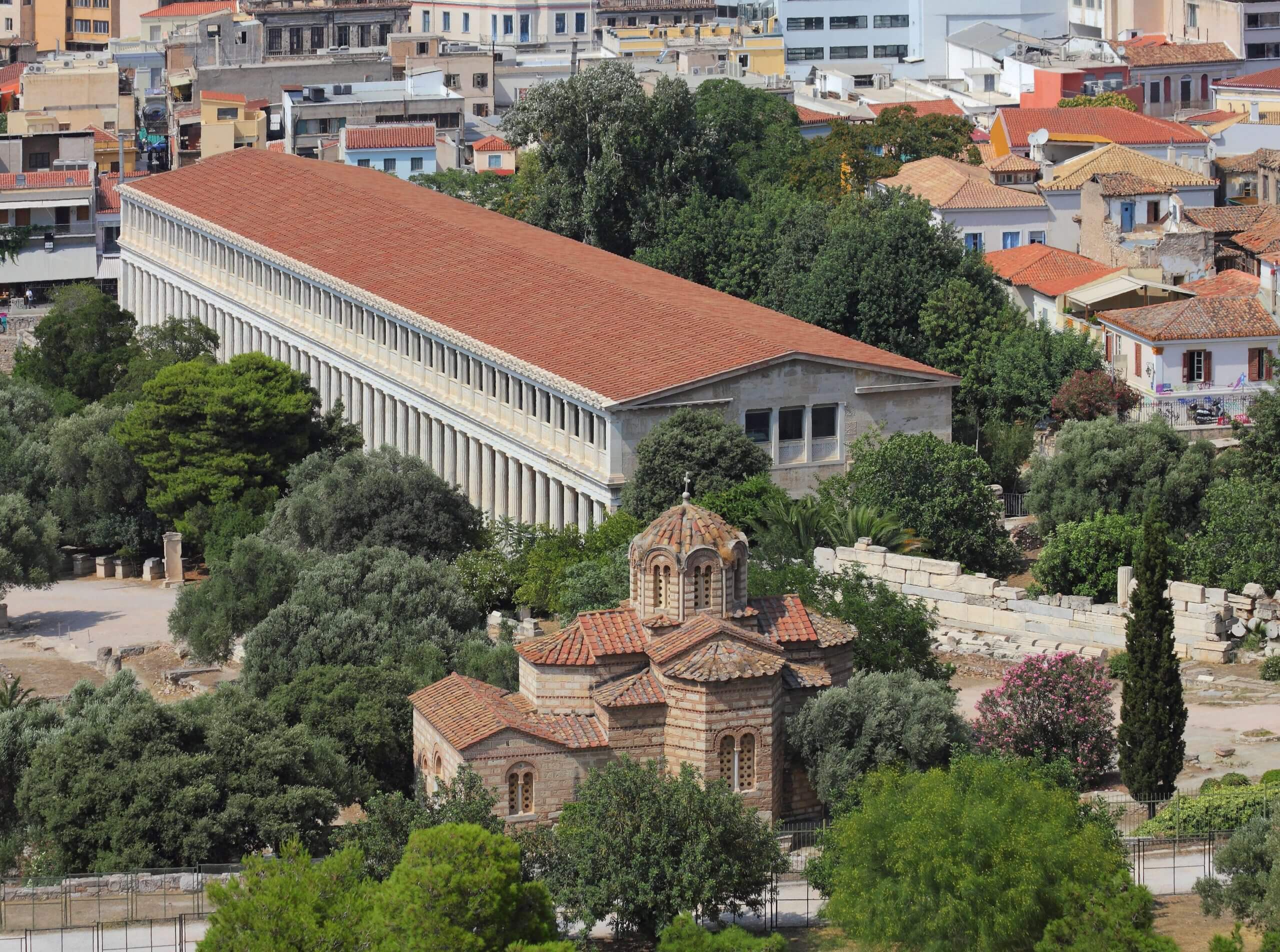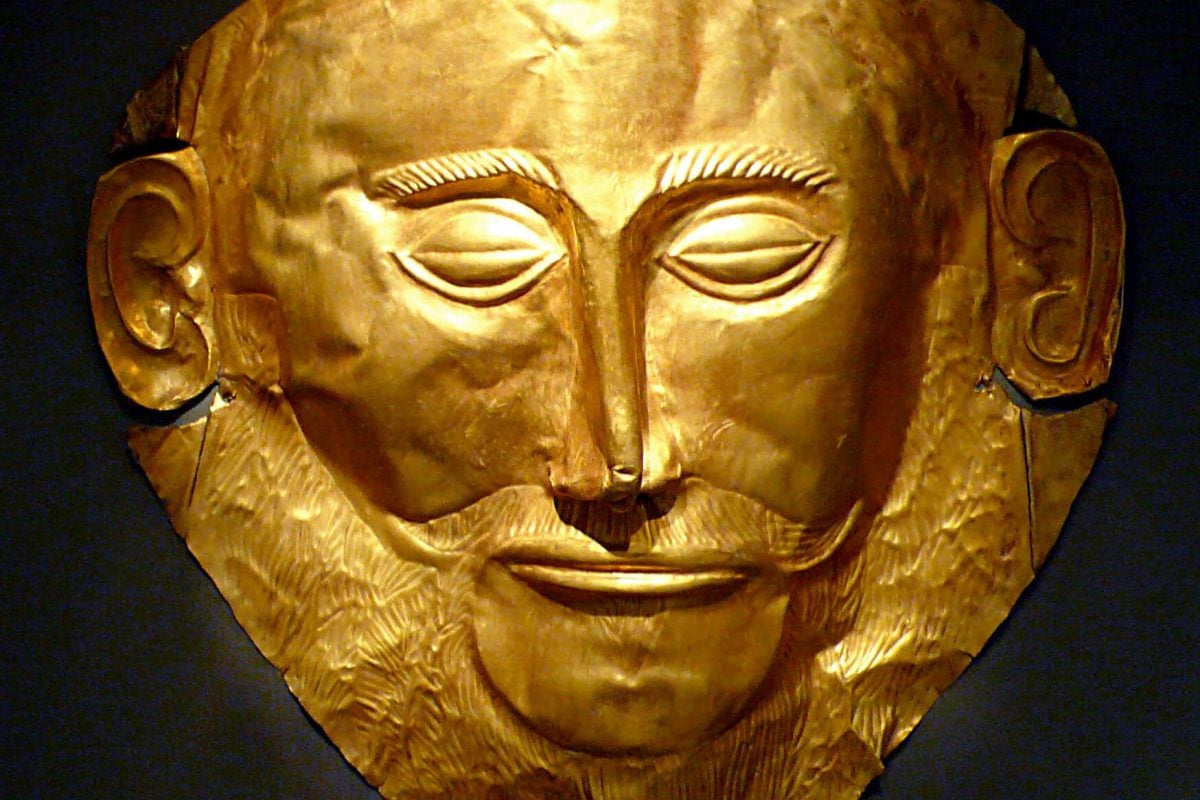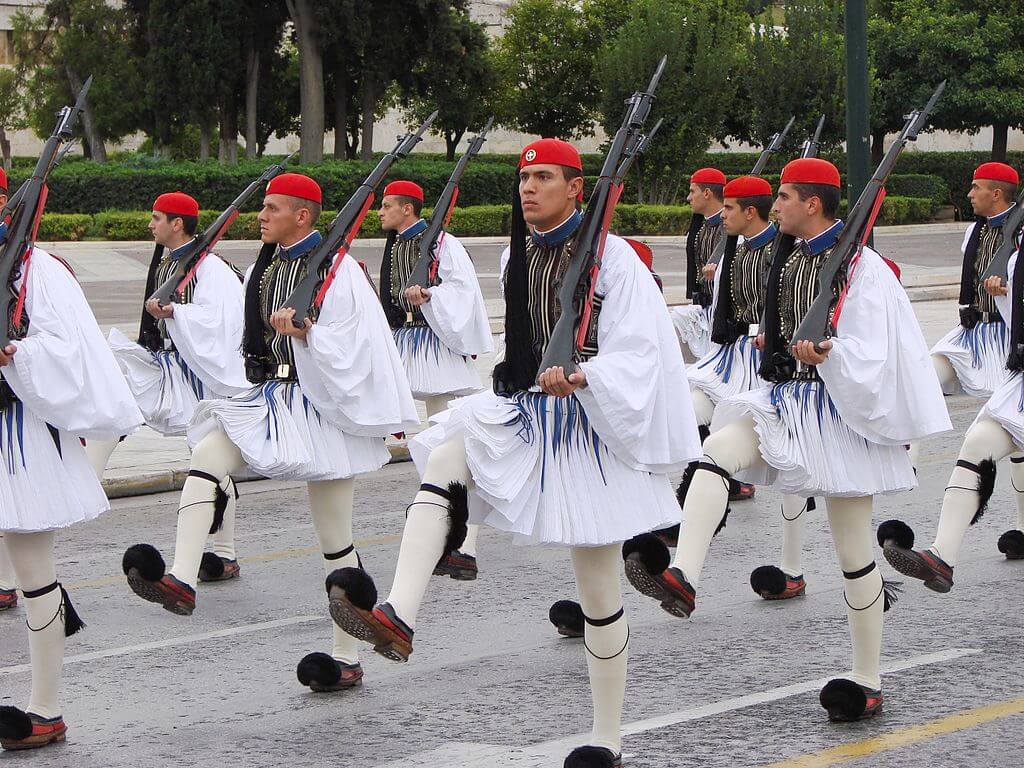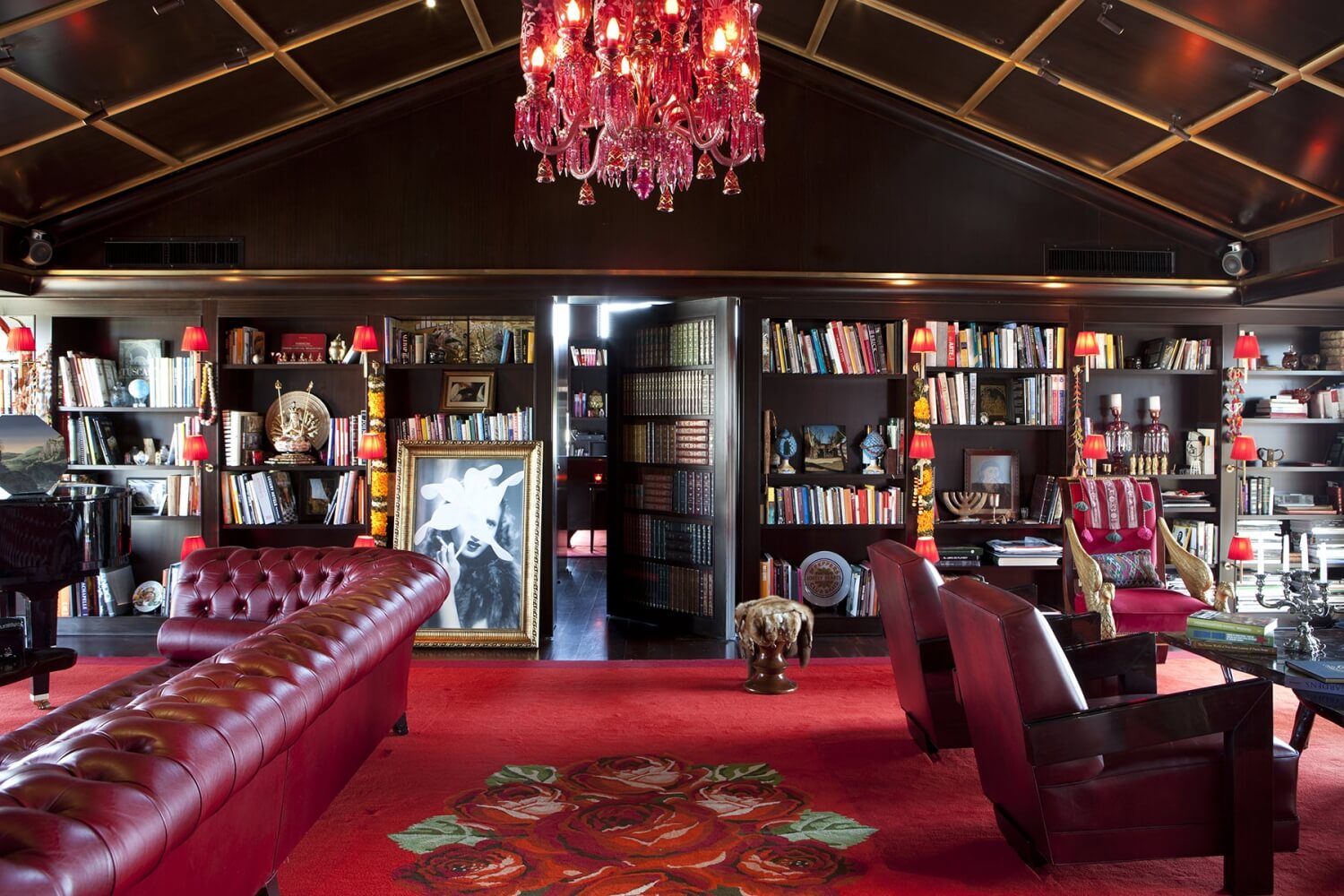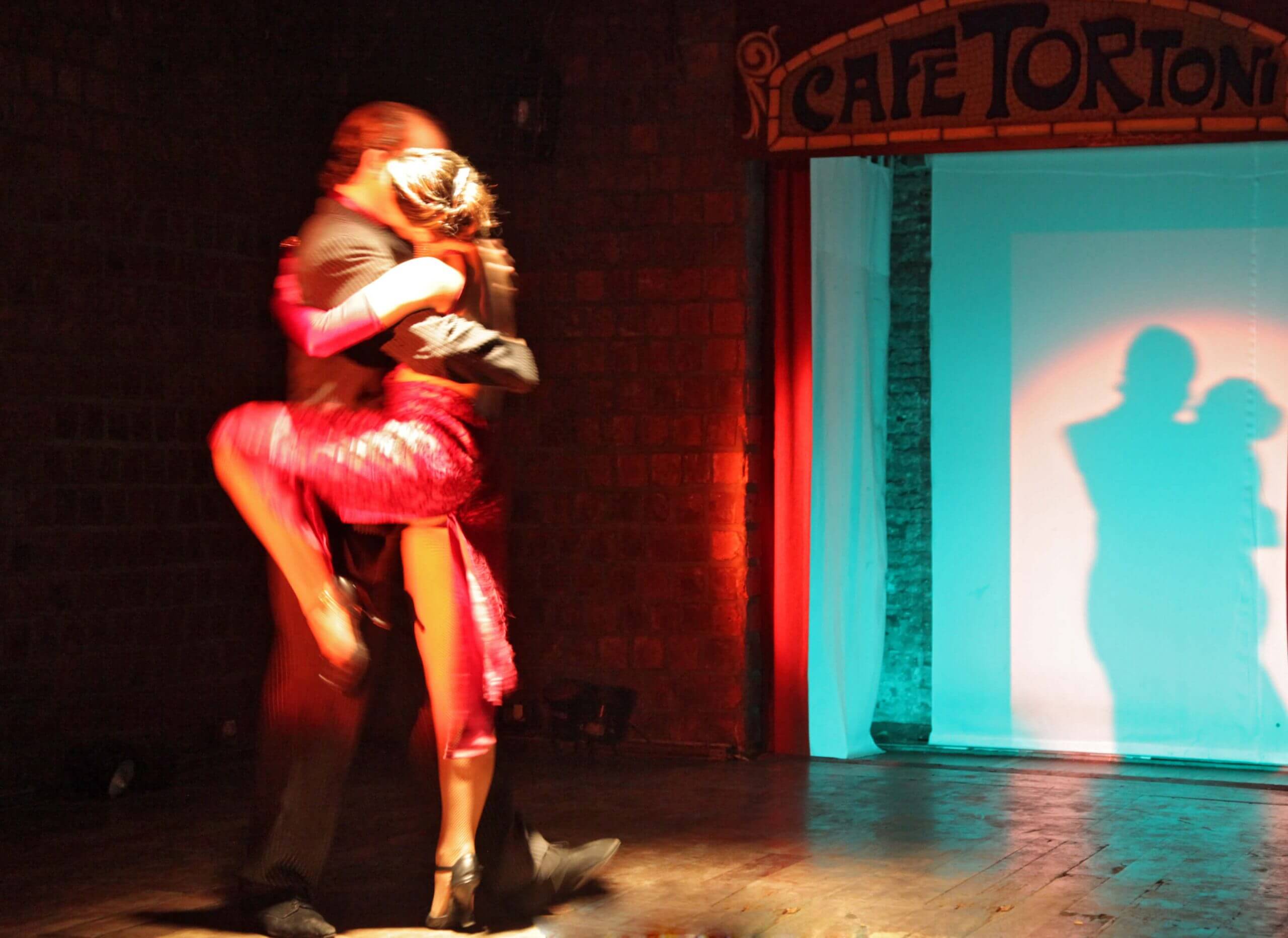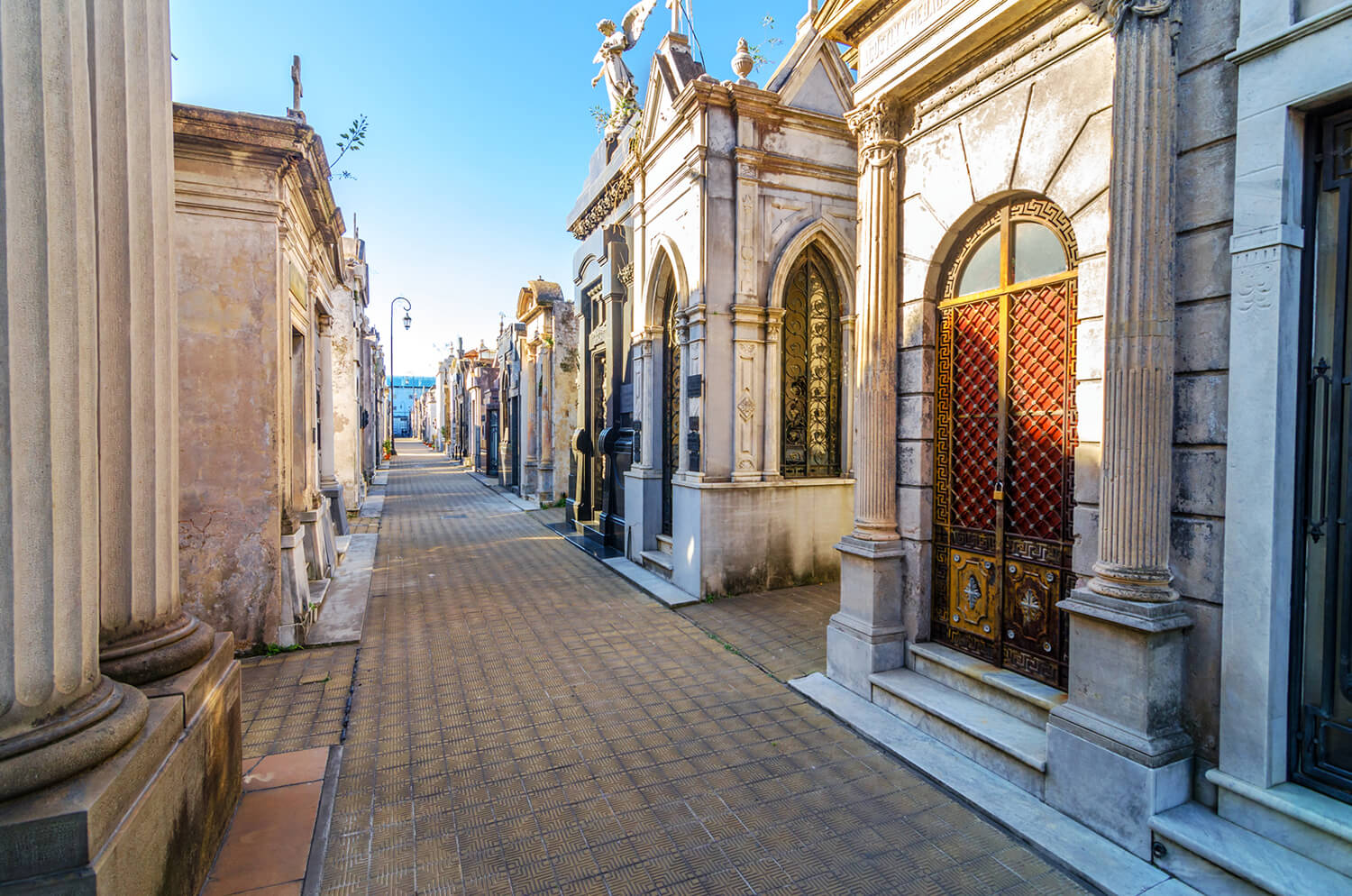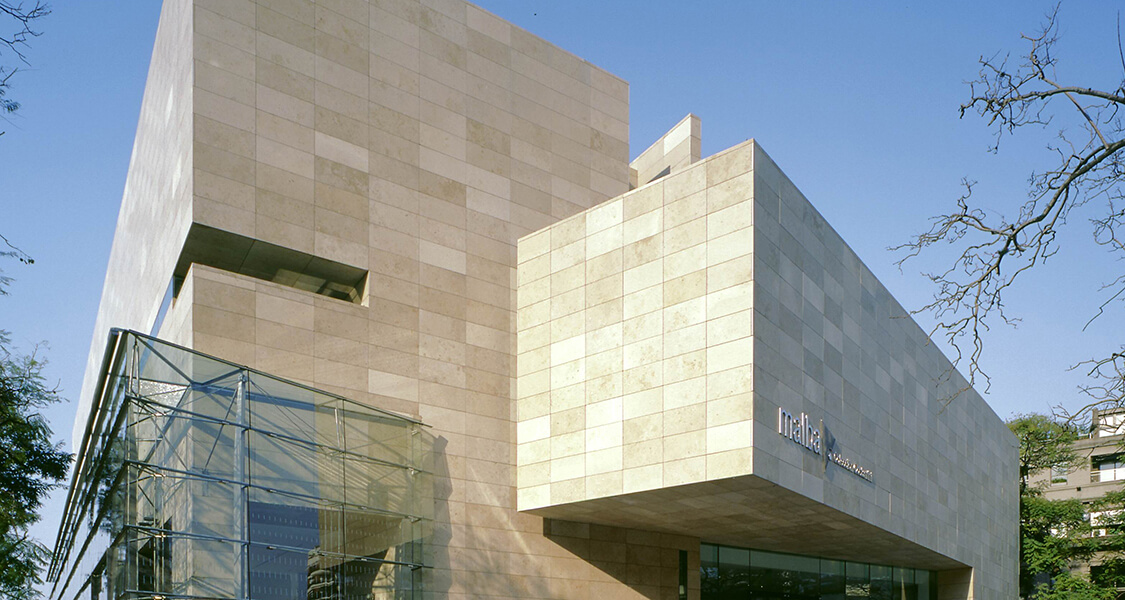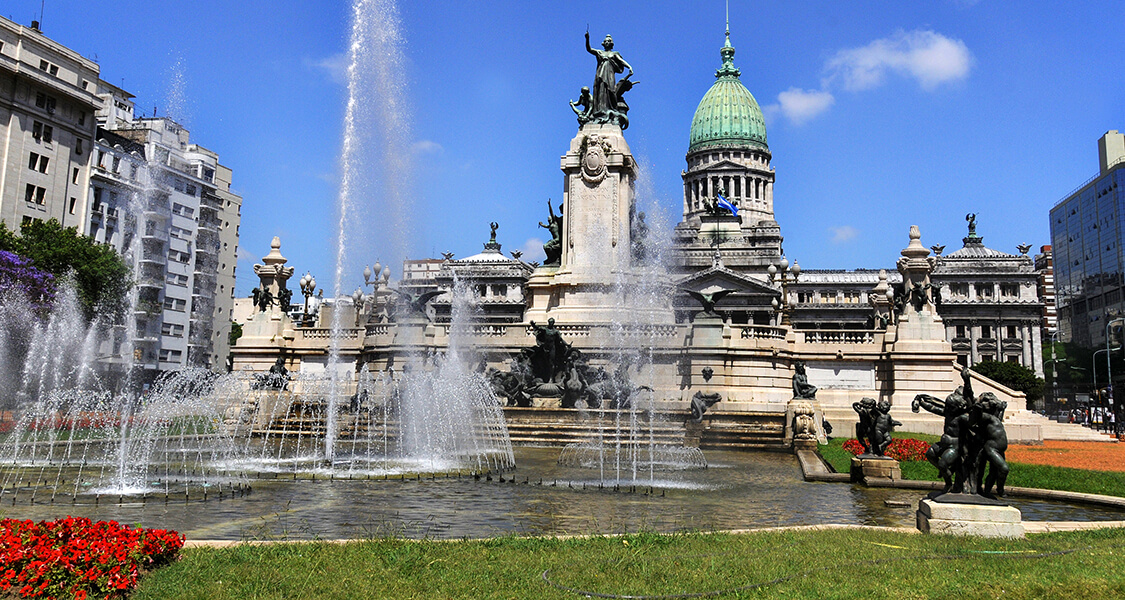
Picturesque Krakow has much to offer travellers of all ages and persuasions. In recent years, cheap flights have made the city a favorite with bachelor parties from the rest of Europe. However, there’s a lot more to this Polish city than nightclubs and parties. Here’s how to spend a short 48 hour break in this fairytale destination.
The best way to start any trip to Krakow is with a delicious breakfast. The city is home to a delightful array of cafes and eateries to suit all tastes. For a great way to start the day, why not try Milkbar Tomasza (ul. Sw. Tomasza 24), the restaurant is famed for their delicious breakfast and lunch options at reasonable prices. Perhaps unexpectedly, Irish breakfast complete with blood sausages is among their most popular morning food offerings, but you can also get pierogis and other more Polish options.
Irish breakfast at Milkbar Tomasza
Once you’ve had your fill, get your walking shoes on for the city’s famous ‘Free Walking Tour’. The guided jaunt through Krakow’s departs daily from between the St. Florian´s Gate and Barbican areas in the centre of town at 10am, 2pm, and 4pm. The tour serves as a sort of ‘Dummies Guide to Krakow’ and allows visitors to sample a taste of the culture and history of the city’s charming Old Town. Best of all, the tour is provided free of charge with guides making a living from tips.
Be sure to tip the ‘Free’ Walking Tour’s excellent guides
Next up, you might fancy a spot of lunch at one of the city’s many traditional Polish restaurants. Introligatornia Smaku (Jozefa, 20) is a favorite among tourists and locals alike. This eatery serves up a selection of Krakow favorites at very reasonable prices.
Alternatively, nearby Bagelmama has the best bagels and lox in town. In addition to the classics, they experiment successfully with combos like warm brie and tomato. Soups and salads are also on offer.
Oscar Schindler’s former enamel factory is today home to a captivating museum detailing the horrors of the Nazi occupation during the Second World War. The museum documents the story of Schindler’s efforts to help save the lives of hundreds of Jews as depicted in the hit movie Schindler’s List.
Oskar Schindler’s factory
Afterwards, why not head east of the Old Town for an authentic Polish dinner at Restauracja Stylowa (Centrum C3), one of the city’s best known traditional restaurants? This Krakow must-see has been in existence since the 1950s and still serves up some of the best grub in town to this day.
Once your appetite is satisfied, it’s time to check out the city’s famous nightlife. Krakow is littered with top quality drinking dens, and many nightspots offering excellent local vodka. Our favorites are Wodka cafe bar (Mikołajska 5) and House of Beer (Świętego Tomasza 35).
After a hearty breakfast, and possibly nursing a hangover, you should enjoy a wander around the city’s historic old town to soak up the hustle and bustle of Krakow. Afterwards, travellers will almost certainly enjoy a walking tour of the city’s Jewish Quarter. The tour leaves the Old Synagogue on Szeroka Street every day at 10am & 1.30pm with an additional tour departing at 5pm between March-October. The ultra-interesting jaunt lasts 2.5 hours and allows viewers to delve into the city’s fascinating Jewish history. There is no set charge for the tour but the guides are paid in tips, so if you enjoyed the tour, don’t forget to give generously.
For lunch, tuck into some local fare at Przystanek Pierogarnia (Bonerowska 14). The prices are reasonable and the food is among the most recommended in the city.
Pierogi from Przystanek Pierogarnia
If you fancy checking out further sights from Krakow’s storied past then make a beeline for the Rynek Underground Museum (Rynek Główny 1). The glitzy museum first opened in 2010 to much fanfare and today, presents visitors with 6000 metres of exhibits outlining the entire history of Krakow.
Historical Museum of the City of Krakow
For your final dinner in Krakow check out Copernicus. It is Polish food at its finest, served in beautiful surroundings. While it certainly not the cheapest dinner in town, it may well be one of the best that Krakow has to offer. It really is the perfect way to round off your Krakow city excursion.
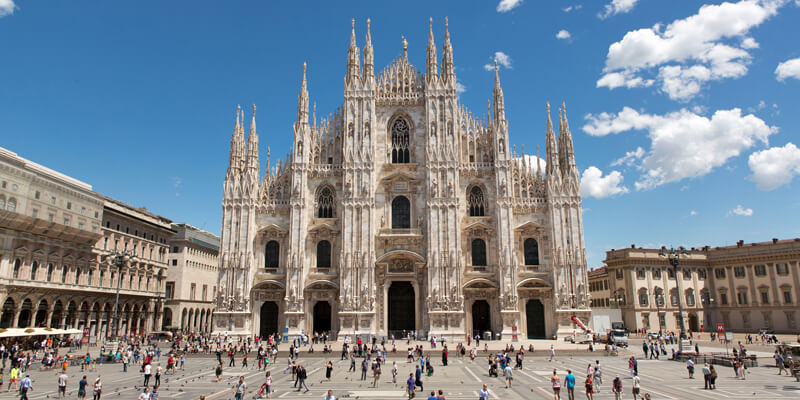
You may think you know Italy if you visited Rome, Florence, and Venice, but you haven’t experienced true Italy if you haven’t paid pilgrimage to modern Milan. This fashionable city is the energetic heart of Italy’s commerce but also packs a historical punch and culinary delights for travelers of all ages and tastes.
If breakfast is the most important meal of the day, then what better way to start your trip than with a traditional Milanese breakfast with the locals? Milan is famous for its coffee, so get your authentic experience on and have a civilized espresso and pastry at the many neighborhood coffee bars on street corners across the city. The experts swear by centuries-old Pasticceria Marchesi.
Energized with breakfast, we recommend you indulge in the many historical wonders that Milan offers. A crossroads of cultures and countries throughout history, Milan has a wealth of ancient and modern sights. A good place to start is the famous Duomo cathedral in the centre of the city. The magnificent cathedral is the largest church in Italy and the fifth largest in the world, taking six centuries and no less than 74 architects and engineers to complete. (Take that, Sagrada Familia in Barcelona!) Art historians often affectionately refer to the Duomo as the wedding cake cathedral emblematic of the International Gothic style. Throughout the years, it’s been the site of famous visitors; Napolean Bonaparte was crowned King of Italy at this Duomo, and authors Mark Twain, Oscar Wilde, and Henry James all had differing opinions on the aesthetics of the Duomo. Form an opinion yourself, you’re in excellent company!
Another stellar spot is the Castello Sforzesco. The former Visconti fortress is home to ten museums proudly displaying masterpieces by Mantegna, Titian, Caravaggio, and Michelangelo as well as ancient Roman and Egyptian works. It is easy to spend days in this museum complex. Don’t miss Michelangelo’s powerful last sculpture in The Museum of Rondanini Pietà.
If you fancy a spot of lunch, head to Luini, strolling distance from the castle. Line up with the locals for panzerotti, a sort of little deep-fried calzone stuffed with fillings like tomato and cheese. If elbowing your way through for fried business isn’t your style, there’s Giacomo Arengario, a “ladies-who-lunch” spot serving Milanese specialities and wonderful view.
Nearby is the storied Galleria Vittorio Emanuele II. This stunning glass, marble, and steel covered arcade is not only a premier destination for high-end shopping, but also a marvel of Belle Epoque engineering named after the first King of Italy. It’s also deservedly known as the salotto di Milano (Milan’s living room) where the refined and well-heeled Milanese shop. Expect to see the best in haute fashion; Milan is widely recognised as one of the cutting edge fashion destinations in the world.
Once you’ve had your fill of shopping, go for dinner at one of the city’s many high quality restaurants. As you might expect, Milan is a food lover’s paradise and the city plays host to an array of culinary fare from across the globe. For a truly special evening, check out Cracco, which offers two Michelin stars of contemporary Italian cuisine, or Hostaria Borromei where you can enjoy traditional regional dishes in an unpretentious space.
After an early breakfast, take a stroll to the Santa Maria delle grazie (Piazza di Santa Maria delle Grazie) to check out one of Leonardo da Vinci’s iconic Last Supper. Unsurprisingly, the masterpiece is extremely popular with tourists so make sure you book tickets to visit the UNESCO World Heritage site in advance.
Afterwards, enjoy a beautiful lunch at La Brisa, this modern Italian trattoria is among the best in town and caters to both meat-eaters and vegetarians. With an excellent wine list, it would be a shame not to order a glass to top off a delicious lunch in elegant surroundings.
A trip to Milan would not be complete without trying out the city’s favorite pastime, aperitivo. This Milanese tradition takes the concept of a happy hour and gives it a local twist for a city which isn’t known for its booze-soaked exploits. Once the clock strikes 6, locals like to enjoy a drink alongside a buffet of delicious appetizers.
A great place to check out some of the best aperitivo joints is the Navigli area, a beautiful canalside district packed with the city’s cool kids enjoying a glass of wine and some nibbles. The options are numerous and the best way to find your favorite is to go for a stroll around the area. La Prosciutteria Milano Navigli is a great option.
No trip to Milan would be complete without a visit to the legendary Teatro alla Scala (Via Filodrammatici, 2), one of the world’s most prestigious opera houses. Known simply as La Scala, it has presented the world’s most famous opera singers over its 240 years in existence, including Maria Callas, Luciano Pavarotti, Placido Domingo to name just a few. It hosted the historic world premiere of perennial opera darlings, Turandot and Madama Butterfly by Giacomo Puccini (the original Andrew Lloyd Weber). Take a tour of the magnificent gilt interior or even better, attend a performance. It will be a perfect finale to your trip to refined Milan, a thrilling modern city of history, arts, commerce, and culture.
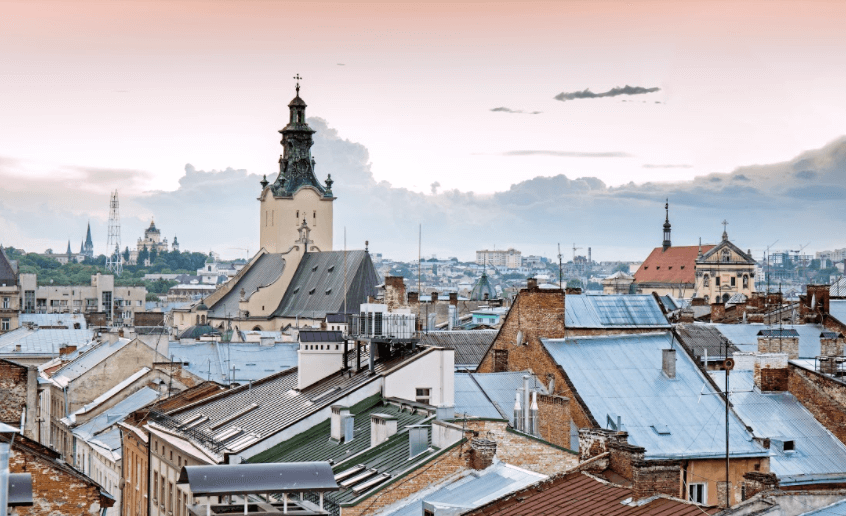
Lviv is Ukraine’s cultural capital — a literary city in the west of the country that leans closer to western European than cities elsewhere in the country. It’s gradually becoming more popular, but is still untouched compared to other regional destinations like nearby Kraków in Poland. Discover this Ukrainian gem in 48 hours with our guide.
When you arrive in Lviv, one of the first things you will notice is the city’s charming old town. The Old Town is listed as a UNESCO World Heritage site and has yet to be spoiled by tourism like other centers in Eastern Europe. A ramble through the city streets will help you gain an appreciation for the vibrancy of Lviv. If you are feeling adventurous then why not climb to the top of the the City Hall tower in the main square, Ploshcha Rynok.
After all of that, you’ll have almost definitely worked up an appetite. Thankfully, Lviv is home to a bustling cafe culture and some very delicious (and budget friendly!) restaurants. A tasty lunch can be enjoyed for a very reasonable price at Museum of Ideas (Valova, 18a), while vegetarian dishes can be enjoyed at Pid Klepsydroyu (5 Armenian Street).
The refectory in the Museum of Ideas
Afterwards, a jaunt to check out the city’s famous cathedrals and churches is sure to satisfy those craving spirituality. Among the most impressive are St. George’s, the Eastern Rite Catholic cathedral (Ploshchad’ Svyatogo Yura, 5), the Dominican church and monastery (Museina Square, 1), the Cathedral Basilica of the Assumption — often simply called the ‘Latin Cathedral’ (Katedralna Square), and the Armenian Cathedral (Virmens’ka St, 7).
After this we suggest you indulge in an afternoon nap in order to prepare for the city’s bustling nightlife.
Upon waking from your slumber, throw on your best outfit (the people of Lviv love to dress up) and head to the super swish Baczewski restaurant (8, Shevska Street), Baczewski offers some of the finest food in the city and their fruit-infused vodka is a must try for any visitor.
Afterwards, we suggest you put your dancing shoes on and check out the city’s famous nightlife scene. For an evening with a difference, we suggest you pay a visit to Cafe Masoch (7, Serbska St.), the venue is named after BDSM pioneer Leopold Ritter von Sacher-Masoch who was born in Lviv in 1836. The seemingly normal bar allows customers to get whipped on request, although those with a lower pain tolerance can just enjoy a regular night out.
Whether you wake up licking your wounds or not, a delicious Lviv-style breakfast is a must. Svit Kavy (6, Katedralna Square) offers some of the best coffee in town alongside a selection of savoury and sweet options to start your day off the right way.
Afterwards, why not check out a traditional banya, a Russian-style bathhouse that is more steam room than sauna. Galaktika Club, a 15-minute bus ride from the Old Town is among the best in the city. There you can also indulge in a massage and other spa treatments.
The banya at Galaktika Club
For lunch, check out Dim Legend, a 5-story restaurant/bar/world of weirdness (48, Staroievreiska St). The food is tasty and the photo opportunities are many in this folklore-themed eatery. Be sure to get your hands on a Local card….but we’ll tell you more about that later.
You will feel so good that your body won’t even care if you pay a visit to the city’s famous brewing museum (18, Kleparivska St) afterwards. The building houses the oldest brewery in the country and is arguably home to the best beer that Ukraine has on offer.
If you fancy a clearer head then pay a visit to the Union of Lublin Mound (Vysokyi zamok). This 29 meter high artificial mound was created in 1869-1890 to commemorate the 300th anniversary of the Union of Lublin. It is located on the summit of Lviv High Castle.
For dinner, why not check out the wonderfully quirky “The Most Expensive Galician Restaurant”(14 Ploshcha Rynok, 2nd Floor, Apartment 8). The restaurant offers excellent local fare with a Masonic theme. Be sure to take a Local card from sister restaurant “Dim Legend” for a discount which will make this weird and wonderful delight pretty damn affordable.
The Most Expensive Galician Restaurant
Afterwards, we suggest that you finish off your visit with a trip to the city’s famed opera house and theater. The Solomiya Krushelnytska Lviv State Academic Theatre of Opera and Ballet ( is undoubtedly one of the city’s greatest historic cultural centers (Svobody Ave, 28). Catching a performance in this beautiful building with certainly make your trip to Lviv an occasion which you will never forget.
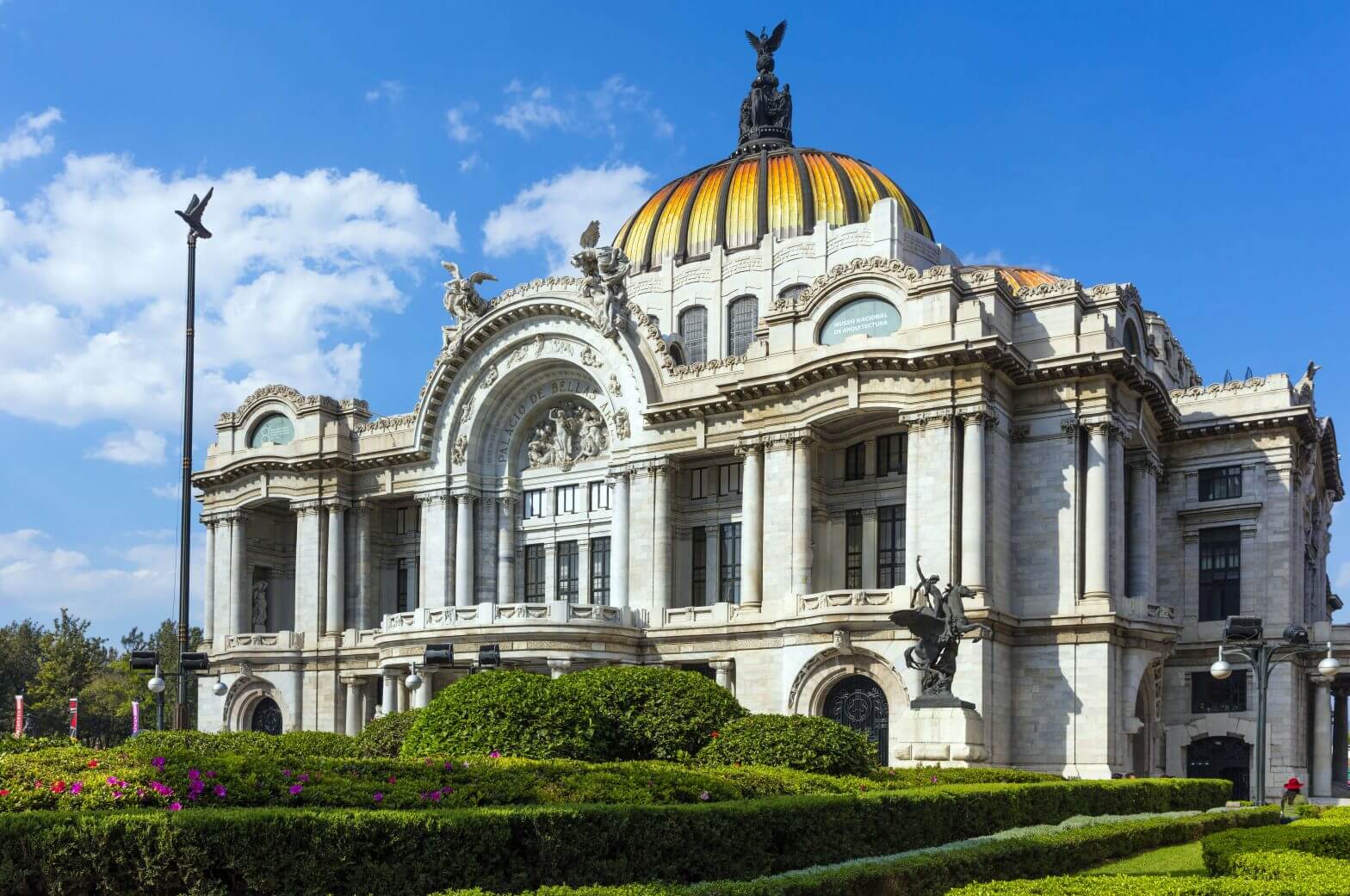
With a population of 8.9 million (21.2 million if you include the greater metro area), Mexico City is not only our-neighbor-to-the-south’s densest metropolis, but it’s also one of the biggest financial centers on the continent and the largest Spanish-speaking city in the world. Mexico City International Airport is the country’s main transportation hub, and you’re not flying direct to your central American destination, chances are you’ll be flying through the capital. If you can, we recommend extending your layover for a dizzying 48 hours in Mexico City to take in all the sights, sounds and tacos you can handle.
Mexico City offers much to see, but if you’re short on time, don’t drive yourself crazy trying to get from one area to the next; target a few prime spots and call it a day (or two). Bring your zen game when visiting, because the traffic can be infuriating.
After arriving, drop your bags at TripExpert’s top hotel, The Red Tree House, a 1930s bed and breakfast situated in the classic Condesa neighborhood, before heading to Centro Historico, a good starting point to soak in the city’s history. Visit Zócalo, the main square (formally Plaza de la Constitución), which was a ceremonial center in the Aztec city of Tenochtitlan and was declared a UNESCO World Heritage Site in 1988. Glimpse the grand colonial buildings, including the Palacio Nacional, the presidential building that houses Diego Rivera’s mural, “Epic of the Mexican People in their Struggle for Freedom and Independence”; the Catedral Metropolitana, an architectural masterpiece that took three centuries to reach completion; and the gorgeous Palacio de Bellas Artes, which hosts world-renowned opera, dance and theater against a backdrop of Mexican murals.
And, if you think you have to leave Mexico City to see ancient ruins, think again. Right in the heart of downtown sits the top-rated attraction in the Centro Historico, the Museo del Templo Mayor. The museum is built around an archaeological site unearthed in 1978 and showcases the remains and artifacts of what once was a towering Aztec temple.
From there, head to the Zona Rosa neighborhood and Paseo de la Reforma, a stroll-worthy main avenue where you can check out the Ángel de la Independencia and Fuente de La Diana Cazadora. Stop by El Califa for tacos and then Four Seasons Hotel Mexico City for a creative concoction by mixologist Mica Rousseau at Fifty Mils lounge, which overlooks the hotel’s lushly landscaped inner courtyard.
Take Reforma straight to Bosque de Chapultepec, the largest urban park in the western hemisphere. Here you can visit Castillo de Chapultepec, the only royal castle in America that’s home to the National History Museum, and nearby Museo de Antropología, one of the most important museums in Mexico and Latin America.
If you’re a shopper, swank Polanco, just to the north of Chapultepec, is the spot for you. The main thoroughfare, Presidente Masaryk Avenue, is an upscale boutique mecca, along with Emilio Castelar street, which serves as a dining and nightlife hub too. For dinner, try lively Villa María on Avenida Homero, which features traditional Mexican fare and must-try oversized margaritas, or much-lauded Pujol for chef Enrique Olivera’s deconstructed take on classic Mexican dishes.
Bosque de Chapultepec with the Castillo de Chapultepec
Hop a taxi south to Coyocán, which is our favorite area by far. A remnant of the colonial era with charming cobblestone streets and chiming churches, it was also the preferred neighborhood of revered artists Frida Kahlo and Diego Rivera. Visit Museo Frida Kahlo, a.k.a. Casa Azul, the famous blue house in which she was born and later died, to get a glimpse of Kahlo’s notorious unibrow depicted in the expansive collection of paintings and photographs.
Afterward, head toward bustling Jardín Centenario, lined with alfresco cafes and restaurants, where you can while away an hour or two people-watching with mezcal in hand. Speaking of mezcal, Corazón de Maguey offers a full page of main courses meant to be paired with the native spirit. Try the Jamaica tacos (pronounced ha-mike-a, not like the Caribbean country), which are fried tortillas filled with hibiscus, or if you’re a bit adventurous, opt for the dried grasshoppers.
Across the square, you’ll find Los Danzantes, which serves up classic Mexican cuisine with a twist. Start with the house specialty, hoja santa, which has gooey Oaxaca and pungent goat cheeses slipped between paper-thin Mexican pepper leaves. Those with a sweet tooth can then join the line at El Jarocho café for churros and hot chocolate.
End the day where you started, in Condesa, which is fast becoming the SoHo of Mexico City. Take in the streets lined with Art Deco buildings and Porfirian-style houses, and pop into the numerous galleries, such as prestigious Galeria OMR, founded by Patricia Ortiz Monasterio and her husband, Jaime Riestra.
Simple, yet, sophisticated, Chef Jair Telléz’s Merotoro is a prime choice for an enjoyable last dinner. Specializing in cuisine from Ensenada, the menu rotates regularly but you’ll always have your pick of national wines to pair with. To cap off the evening, enjoy a drink at posh Condesa DF’s rooftop or try La Clandestina, a candle-lit space that’s dedicated to all things mezcal.
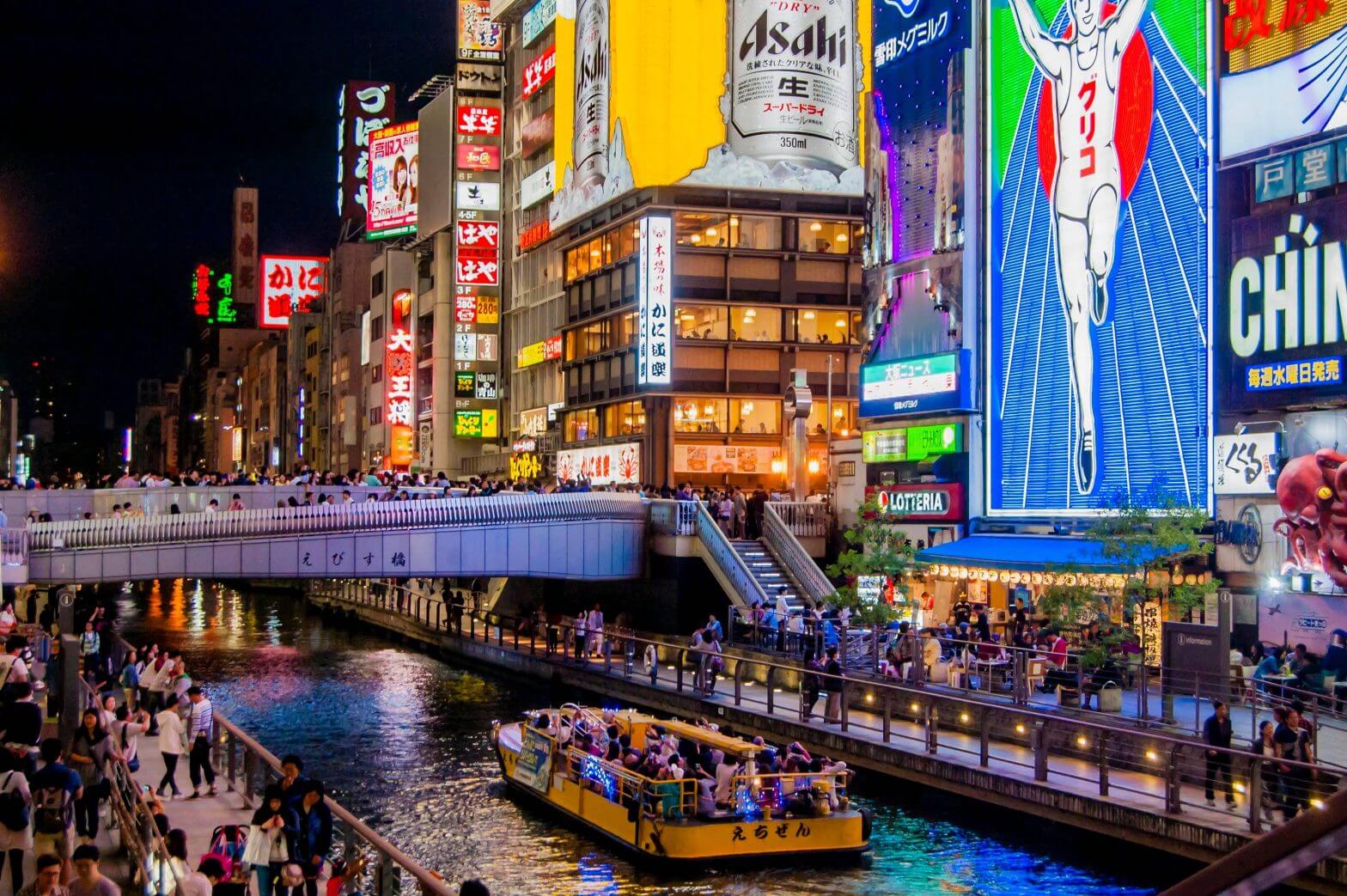
Every trip to Osaka should include a visit to Osaka Castle, a breath-taking, Disney-like structure built in the latter half of the 16th century. Stop by in the morning, when the crowds are thin, and spend a couple of hours taking in the castle’s ageless beauty and watching cyclists and runners race around a shaded gravel track that traces its impressive, silvery moat.
Most Japanese eat breakfast at home, but there are plenty of bakeries serving on-the-go meals in the morning. Check out The City Bakery at Grand Front Osaka for a bite to eat and good coffee. On your way to the bakery, swing through Nakanoshima Park, an islet between the Dōjima and Tosabori Rivers. Nakanoshima, the first public park in Osaka, was built in 1891, and today it incorporates a library, a ceramics museum, and a picturesque little rose garden.
Assuming you’ve worn your walking shoes, leave The City Bakery, skipping over Umeda for now, and stroll over to Tenjinbashi. Here you’ll find a nearly two-mile long covered promenade jam-packed with boutiques, restaurants, bars, cafés, convenience stores, and more. Before you pick up a miso starter from Torii Miso, some kitchen goods from House Kaneki, and more fashion than you know what to do with at Ae-Sop, check out the Tenmangu Shrine, the most revered Shinto shrine in Osaka, the religious site itself dating back a millennium.
When hunger strikes, set down your shopping bags and blend in with the locals at Harukoma. Unmistakable for its perpetual queue, this sushi spot delivers on many levels—one being it’s affordable, with an average meal for two costing roughly $30. After your meal, chill out with a pint of Japanese ji-biru (craft beer) at nearby Beer Belly Tenma, a small brewpub associated with Minoh Beer, an award-winning brewery run by three sisters.
When night falls, head to Amerikamura, “America Town,” the eclectic epicenter of Osaka street culture. This former warehouse district-turned-hotspot for teens and twentysomethings offers yet another opportunity to shop, but this time for wilder things. Make sure to visit Village Vanguard; it may bill itself as a bookstore, but it’s more like a one-stop shop for every facet of Japanese pop-culture under the sun: anime, vinyl albums, hip-hop streetwear, downright absurd magnets, pins, and buttons, and so much more.
In Osaka, there are really only two dishes you have to try, one being takoyaki, golden balls of goodness filled with octopus and topped with sweet soy sauce and mayo. Grab a pack of six from Koryagu, a garishly decorated indoor-outdoor shop kitty-cornered from Sanakaku Koen, or “Triangle Park,” which is essentially the hub—and most prime people-watching spot—of Amerikamura. In the mood for a longer night? Go to Bar Nayuta, right across the street from the Triangle Park. It’s cheap, cheerful, and full of a motley crew of characters. Plus, it stays open very late—5-AM late.
Afterward, unwind at your room. Highly recommended are Hotel Monterey Grasmere Osaka and the five-star St. Regis Osaka.
Momofuku Ando Instant Ramen Museum
Start your day off with breakfast in Dōtonbori at Kissa American, a jun-kissa, or basic café. After a round of eggs, bacon, and coffee, take the subway to Umeda, where you can get a sky-high perspective of Japan’s second city at the floating garden inside the Kiji Umeda Sky Building ($10 entrance fee).
After you descend from this dizzying height, here’s an oddball for you: a trip to the Momofuku Ando Instant Ramen Museum. It might sound kitsch, but it’s actually one of the more interesting modern museums in Japan. Pay your respects at the statue of the inventor of packaged ramen before you enter this surprisingly large space, where you can stroll through a tunnel of ramen variations and later create your very own cup of the instant soup.
If you’re lucky enough to be in town during a Hanshin Tigers baseball game, then shuttle over to Hanshin Koshien Stadium to take part in the ritual of watching Japanese baseball from the grandstands. If you’re not so lucky, then go for a different kind of cultural experience, a traditional puppet show at the National Bunraku Theatre.
Round out your whirlwind 48 hours at Osaka’s neon-lit hotbed for tourist activity, Dōtonbori. The first stop should be the bridge crossing the Dōtonbori canal. Here is the perfect perch to snap a photo of the iconic, neon-lit Glico running man. Photo-op complete, round the corner to chow down on the other dish you have to try in Osaka, okonomiyaki.
Unfairly referred to as the “Japanese pancake,” okonomiyaki is, in fact, a much greater thing: shredded cabbage, Japanese yam, egg, dashi, and a flour-based batter, cooked on a griddle and topped with shredded bonito flakes as well as crisscrossed lines of mayo and a sweet sauce that tastes a little like Worcestershire. A good bet is CHIBO, which is right in the middle of Dōtonbori’s walking street. Call ahead to get a seat at the bar, where the chefs put on shows for their clientele each night.
If you still have some energy left, check out the institution that is Bar Core, a so-called stand bar (no tables, in other words), with room for only six at a time. Here you can chew the fat with the dapper barman over some rare, aged Japanese whiskeys and end your 48-hour stay in style.
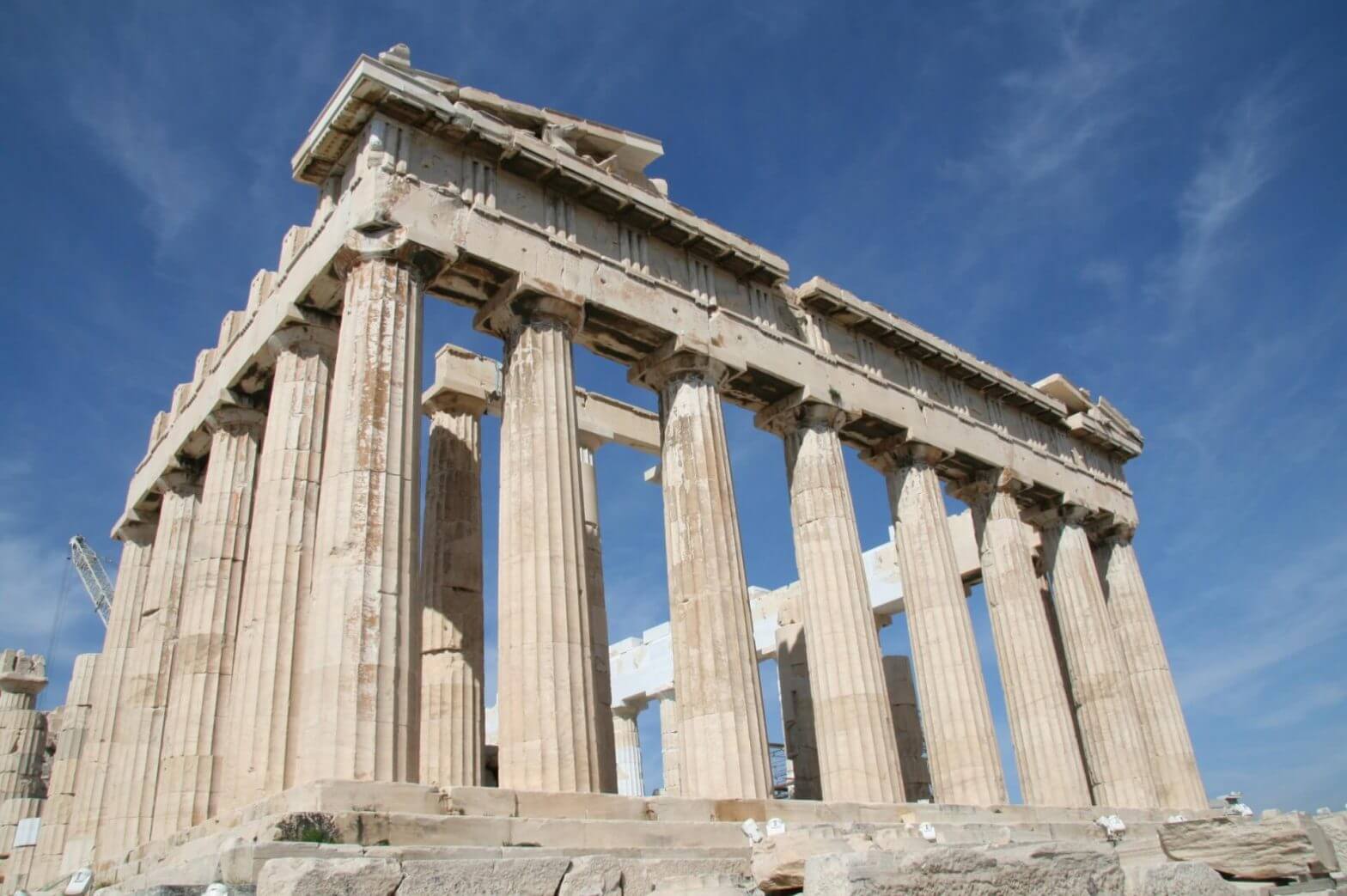
True, Athens can seem a little overwhelming at first. Between the majesty of the Acropolis, the vibrant colors of the Plaka and the non-stop energy of Syntagma Square it can almost seem like the Greek gods are conspiring to throw you a curveball: how can you possibly see it all when time is limited? First of all, relax. While you’d have to be crazy to think you can manage more than 3,400 years of civic history in the space of a weekend, you can actually take in a quite a bit in 48 hours—and still have time for people-watching over a tall frappé, just like the Athenians do.
With 48 hours in Athens, chances are you will be spending at least a few of them tackling the Acropolis, so why not get an eyeful of this starring attraction even before you set out? The vast, wraparound rooftop terrace on the tenth floor of the new Electra Metropolis Athens affords the best view of the Parthenon and Acropolis from any hotel in Athens, hands down. It does double duty as the hotel’s breakfast area and evening cocktail area and features a jaw-droppingly beautiful rooftop pool, too. The 216 rooms and suites pairs classic luxe looks (think hardwood floors and crushed velvet headboards) with modern conveniences and totally indulgent marble bathrooms. Rooms are from approximately $220 a night. (Hint: if they’re sold out, try the New Hotel nearby).
Electra Metropolis Athens
If the Acropolis is the most famous of Athens’ landmarks, the Parthenon (completed back in 438 BC) which graces the peak is its most emblematic. Because of the enormous cultural weight this place carries, you might want to give yourself some context before you make the nearly 500-foot climb and the best place to do that is at the ultra modern Acropolis Museum, situated at the base of the hill. Inside you can peruse some 4,000 artifacts in five collections, including finds from the slopes of the Acropolis and antiquities from the Greek archaic and classical periods. Go for lunch at the rooftop restaurant and enjoy panoramic Acropolis views. Museum admission is 5 euros.
As you make your way up the Acropolis itself (admission fee 20 euros; seasonal reductions) the first structure you’ll see is the Propylea, the monumental gateway of the ancient religious complex of which the Parthenon is the centerpiece. And if you’re not too distracted by the spectacular city views in all directions, also take time to inspect the Erechtheion, with its six stunning female Caryatid sculptures.
The afternoon is a good time to explore the ruins of the ancient Athenian agora, which is less dramatic than the Parthenon but no less evocative. This area lies just northwest of the Acropolis (it’s an easy walk) and contains numerous sights, including the recently restored Museum of the Stoa of Attalos and the remarkably well-preserved Temple of Hephaestus. Admission to the Agora can be included with Acropolis admission or as a separate (and less expensive) ticket.
After soaking up all that history, chances are you’ll be hungry. Tuck into some delicious grilled fish and Greek food classics right in the heart of the Plaka at Diodos (19 Adrianou St). Friendly service and Acropolis views will help make it a meal to remember.
Paris has the Louvre, Athens has the National Archaeological Museum. It’s a good thing you had a sound night’s sleep before, because it takes stamina to navigate the thousands of artifacts at what is incontestably one of the greatest museums in the world. Highlights include the gold mask of Agamemnon, the bronze statue of Zeus, frescoes from Akrotiri (the ruined Minoan city in Santorini said to be the original Atlantis), the Antikythera Mechanism—an ancient analogue “computer” recovered from a famous shipwreck—and more richly painted ancient Greek vases than you can count. Admission is 10 euros.
The Mask of Agamemnon, National Archaeological Museum
The neighborhood around the museum, Omonia, has little else to recommend it so after your visit is complete head to Syntagma Square, home to the Greek Parliament and Monument to the Unknown Soldier. This is where to see the iconic Evzones—traditionally dressed presidential guards—who rotate positions on the hour.
Syntagma is the heart of modern Athens and it bustles at every hour. For lunch, hit The Greco’s Project at 5 Mitropoleos St where you can either get an amazingly good gyros to go or sit down for a more leisurely plate of souvlaki, moussaka or any number of homemade Greek specialties. You can have a great lunch here for two for under 20 euros.
Evzones at Syntagma Square
In the afternoon, if you have any energy left (and of course you do—you’ve taken your cue from all those Athenians walking around with iced coffees, haven’t you?), explore one of the city’s fantastic, lesser-known museums. One is the Museum of Cycladic Art (admission 7 euros). Technically located in the upscale Kolonaki district, it’s a five-minute walk from Syntagma Square and a veritable treasure chest of antiquities from the Greek islands, Cyprus, Mycenae and more. If on the other hand you want to see the coins that Plato may once have used to buy Socrates a drink, check out the nearby Numismatic Museum (admission 3 euros), housed in the former mansion of Heinrich Schliemann—the notorious archaeologist who excavated Troy.
At night, hop on the modern Athens metro to Keramikos. From Syntagma Square this is just one stop after the Monastiraki stop. When you exit the station you’ll be in the heart of Gazi which is the epicenter of Athenian nightlife. One glance around the large main square, ringed with restaurants, cafés and bars, and you’ll get an instant refresher course on why cosmopolitan is a Greek word at heart. Almost anywhere you go here is going to be great, but do make time for a cocktail at the raucous Shamone (Elasidon 46) or something more substantial at Butcher Shop (not a real butcher shop) at 19 Persefonis St. Most bars in Gazi serve food too.
Athens is a truly a global city, and it shows and shines in the ancient monuments, the foodie and culture scene and in the sheer vitality of the Greek people who proudly make the capital their home. Two days of taking in the top sights won’t give you much time to rest, but it just might whet your appetite for more.
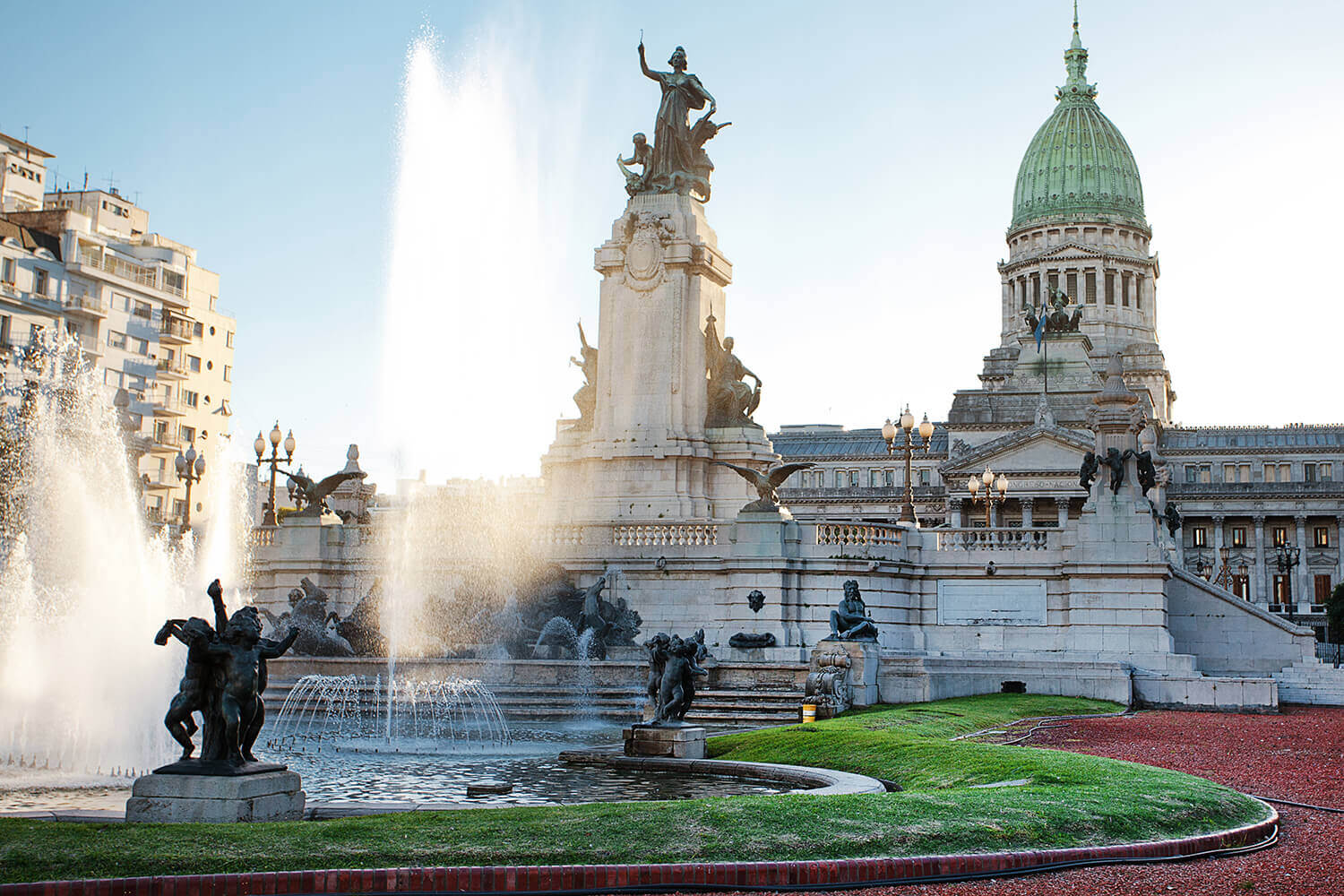
To start off, let’s check into the Faena Hotel, the highest ranked hotel in Buenos Aires. It “projects a low profile, but the interiors of the luxury hotel are bathed in rich reds and black marble, creating a sexy, dramatic ambiance,” says Forbes Travel Guide. Designed by the renowned Philippe Starck, “it’s the kind of place where you might easily find yourself sharing an elevator with Sting,” says Travel + Leisure. Rates start at $357 a night.
After you explore the hotel amenities, which include two on-site restaurants, a lounge that stays open late into the night, and swanky pool area, it’s time to see the neighborhood. The Faena Hotel is located in Puerto Madero, a waterfront district that buzzes with activity. “Sleek office buildings reach into the sky, trendy restaurants are filled with well-heeled locals, and a number of celebrities own places in the hood’s high-rise apartment buildings,” details Forbes Travel Guide.
After a walk along the Rio de la Plata, it’s time to head to Café San Juan, in the nearby neighborhood San Telmo. Getting there is easy: while Uber is still not available in Buenos Aires, Easy Taxi is an app that works the same way and is available throughout most Latin American countries. It accepts all major credit cards, and is available in most languages.
An Easy Taxi ride to Café San Juan will cost under $2.00 no matter the time of day. Just ten minutes away from the Faena Hotel, this family-run restaurant is where locals and tourists gather, and it would be wise to make a reservation. “During the daily lunch rush, chef Leandro Cristobal fashions inventive tapas and pastas from the likes of sun-dried tomatoes, brie and seasonal vegetables, while his mother pours the wine,” says Time Out. A meal here averages $30, including a glass of wine, but keep in mind that it’s a cash-only venue.
It’s now time to visit the city’s most famous landmark, Argentina’s National Museum of Fine Arts, or el Museo Nacional de Bellas Artes. An Easy Taxi from Café San Juan ($3) will drop you off in front of this impressive structure, in the heart of the posh Recoleta neighborhood. It’s open from Tuesday til Saturday, and admission is free. According to Travel + Leisure, “the best part of the museum is the Argentinean art—the most extensive collection anywhere. Apart from its intrinsic beauty, the collection gives a peek into life over the centuries, from the Italian immigrants of La Boca (an industrial port) to frontier life on the pampa.”
After touring the museum, you can view the sunset in the middle of the city’s Plaza de Mayo. Another $3 cab ride will take you to downtown, which houses the political institutions in the country. Surrounded by old neoclassical buildings, the plaza is filled with energy and history.
Once again, it’s time for a bite. Argentina is best known for its beef, and La Cabrera, is the place to taste some. Nestled in the Palermo neighborhood (a $4 cab ride from Plaza de Mayo), La Cabrera is also popular for argentines and tourists alike, so it is best to make a reservation. “Stick with classics from the grill, like sweetbreads, ribeye, short ribs, and stuffed pork bondiola (shoulder),” recommends Frommer’s. Dinner here will be just under $20.
A trip to Buenos Aires is not complete without a tango show. Luckily, the Faena Hotel has the “Rojo Tango” on at 10 pm. Get back to the Faena for $4 using Easy Taxi and enjoy the show for $17.
A trip to Buenos Aires is not complete without a tango show. Luckily, the Faena Hotel has the “Rojo Tango” on at 10 pm. Get back to the Faena for $4 using Easy Taxi and enjoy the show for $17.
Day one was packed with attractions throughout the city’s most iconic neighborhoods. Day two will be take place mostly in Recoleta and San Telmo, because they’re lovely for strolls. But first, there’s always a need for some good breakfast. Start the day at Café Tortoni. A $2 cab ride will get you there from the hotel, and it happens to be on the way to the next destination. Tortoni is an institution in Buenos Aires, with a charmingly ceremonial feel given its fame of attracting famous authors. “If there’s a spiritual, intellectual, and historical epicenter to Buenos Aires, this is it,” says Concierge. And coffee here is really good too.
Buenos Aires is huge, but walking the city’s streets is essential to captivate the porteño (as locals are called) essence. The best area to walk in is Recoleta, just a $2.50 Easy Taxi ride away. “Elegant houses reminiscent of their Parisian counterparts line the streets of chic Recoleta,” says Michelin.
During the stroll, be sure to check out the Recoleta Cemetery. Just like Père Lachaise in Paris, Buenos Aires is elegant enough that a cemetery can be worth visiting. Travel + Leisure notes that, “with more than 4,700 ornate stone crypts laid out along a streetlike grid, this graveyard is an architectural masterpiece, and an eerie miniature city for the wealthy dead.”
After all that strolling, it’s time for lunch. Luckily, it’s walking distance. The highly recommended Oviedo promises a memorable experience. In a meat-centric city like Buenos Aires, Oviedo is known for offering some of the best seafood. Fodor’s says that, “you can’t go wrong with any of the pristine shellfish dishes. Top it all off with one of the better wine lists in the area and you’re in for a memorable lunch or dinner.” Lunch here can range from $25 – $100.
MALBA and the Plaza Dorrego
It’s now time to say goodbye to Recoleta and head over to the MALBA to peruse some of Latin America’s finest art. An Easy Taxi ride of $1.50 will take you to this museum, which Lonely Planet calls “one of BA’s fanciest.” Some work by the dynamic duo of Mexicans Diego Rivera and Frida Kahlo is on display. General admission is $4.50.
Another quick cab ride ($3.50) will take you to Plaza Dorrego, which will be especially nice at dusk. Known for the vendors, cafes, and tango on its streets, this colorful plaza in San Telmo is best enjoyed on Sundays. According to our experts, San Telmo gives Buenos Aires that bohemian air that somehow works so well next to the posh neighborhoods of Recoleta and Puerto Madero.
While in San Telmo, history buffs cannot miss out on visiting El Zanjon de Granados. Part archaeological museum, part event space, El Zanjon is a restored residence that encapsulates three centuries of urban living. “Expect few visitors and plenty of atmosphere on weekdays; cheaper, shorter tours on Sunday draw far more people,” recommends Fodor’s. Depending on the day, a tour will cost from $11 – $13.
A last meal in Buenos Aires is difficult to choose – the city is filled with great restaurants. The best choice would be Tegui, where ten-course meals are the norm. There’s something for everyone in this Palermo venue that was recently awarded for being amongst the best in Latin America. A $5 ride from El Zanjon will take you to this seemingly discreet façade, which hides high-concept cuisine. Travel+ Leisure recommends the “gnocchi and sweetbreads, rabbit terrine, and very slowly braised lamb.” A meal at Tegui starts at $40.
Take one last Easy Taxi ride to the Faena Hotel for $5 before you enjoy some rest from walking your way through Buenos Aires. While 48 hours is quick, go to bed knowing that you saw the top attractions and ate in the best restaurants while gallivanting through the Argentinian capital. It’s not an easy task to take in a huge city like Buenos Aires in two days, but with this itinerary, it can definitely be done well.
Just another WordPress site
